Best digital pianos for beginners 2025: 8 beginner-friendly pianos handpicked by a professional piano and music gear reviewer
An expert look at the very best beginner digital pianos on the market from the likes of Yamaha, Casio, Korg, and Roland - including full reviews and video demos
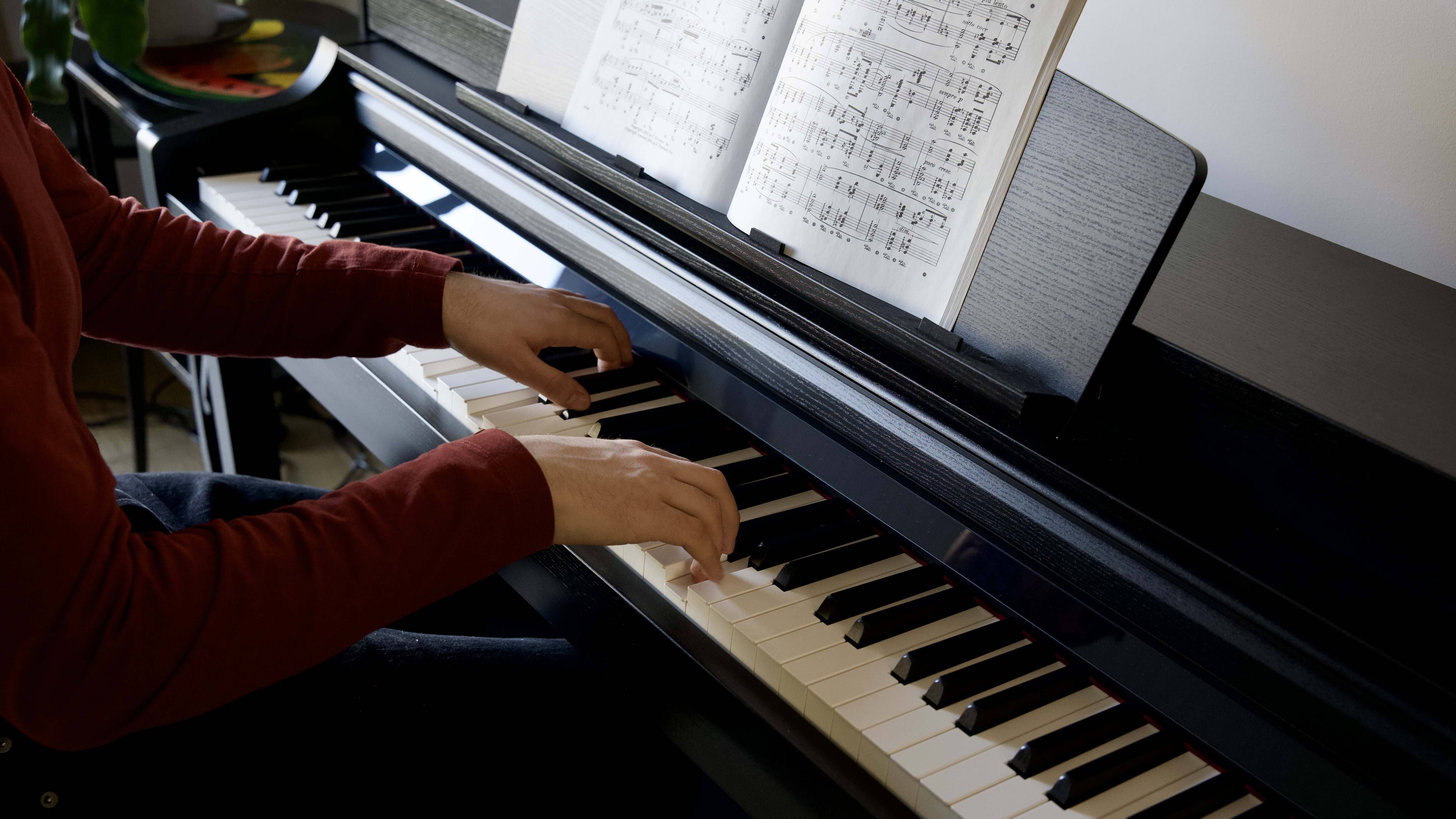
While lots of us dream of having a beautiful-looking acoustic piano in our home, in reality, they aren't always the most practical option, especially for beginners. There are several inconveniences with traditional pianos to consider, from the back-breaking weight, high cost, to the regular tuning and maintenance of these instruments. It's no surprise, then, that smaller, lighter, and more affordable digital pianos have become a popular alternative. So, whether you're just starting out or looking to upgrade from a regular beginner keyboard, I've got you covered with the best digital pianos for beginners.
My name is Daryl, and I’ll be guiding you through selecting your very first digital piano. I’m a former music retail manager, and I spent nearly 10 years in that part of the industry helping pair musicians with the right instrument. I have since shifted away from retail and now use my years of experience writing for MusicRadar, reviewing the latest models, and hand-crafting buyer's guides for the site.
Now, it's all well and good for your new piano to be beginner-friendly, but remember your new instrument needs to be good enough - with enough engaging features - to keep inspiring you when the going gets tough. It also needs to have a comfortable and responsive key action, as well as a robust build. That's why my top choice is the Casio Privia PX-S1100. This compact piano boasts an impressive range of tones, with superb build quality and playability.
I've also included a handy 'FAQs' section, so if you need further guidance, simply hit the button above. Then, when you're ready to invest, our price comparison widgets have found today's best prices to ensure you bag a bargain.
Quick list
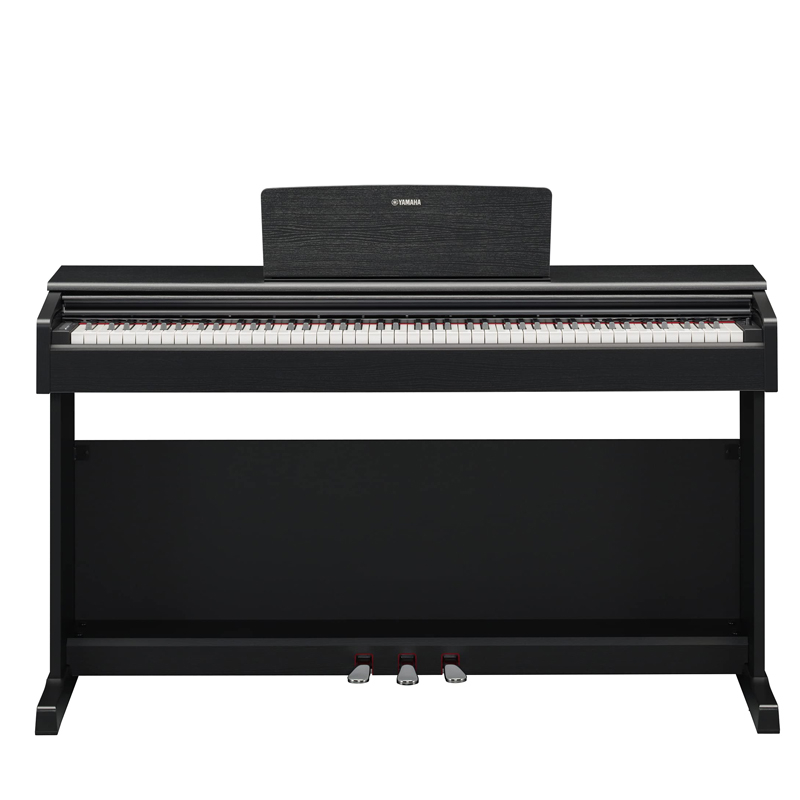
At this level, your additional investment includes an upgraded speaker system and a lidded cabinet stand with a three-pedal setup, which will support you through ABRSM Grade 4 lessons and beyond.
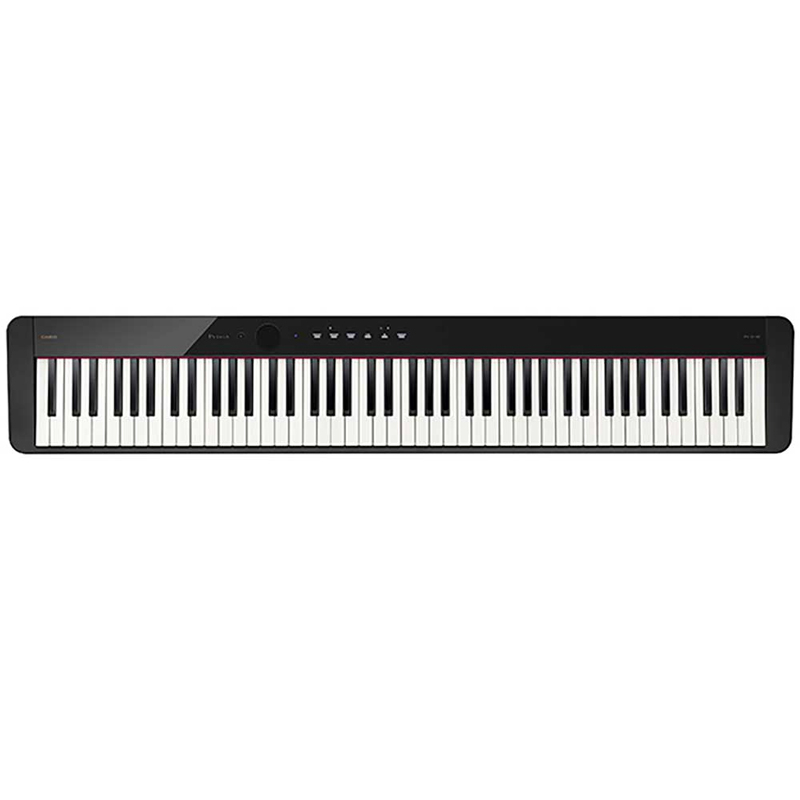
The eagerly awaited upgrade of the S1000, the new PX-S1100 builds on its predecessor by adding the modern features today’s budding pianists demand. This 88-note fully weighted keys piano is perfect for aspiring players looking for an affordable instrument that doesn’t scrimp on quality.
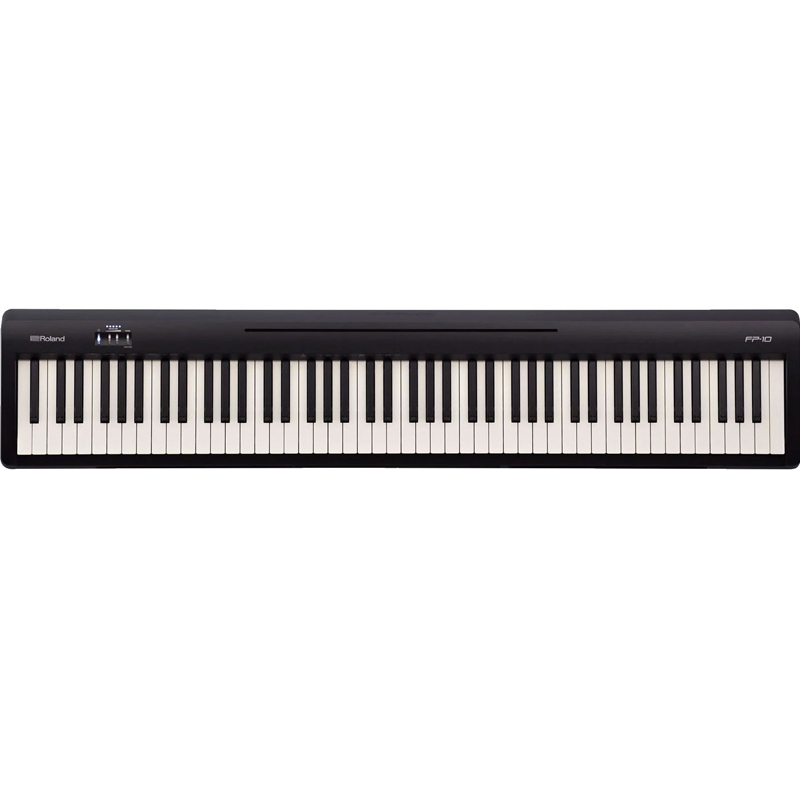
As Roland’s newest entry-level, full-size digital piano, the standout feature on the FP-10 has to be its class-leading PHA-4 keyboard. Beautifully responsive and representing staggering value, it’s exactly the same action found on the pricier FP-30 model.
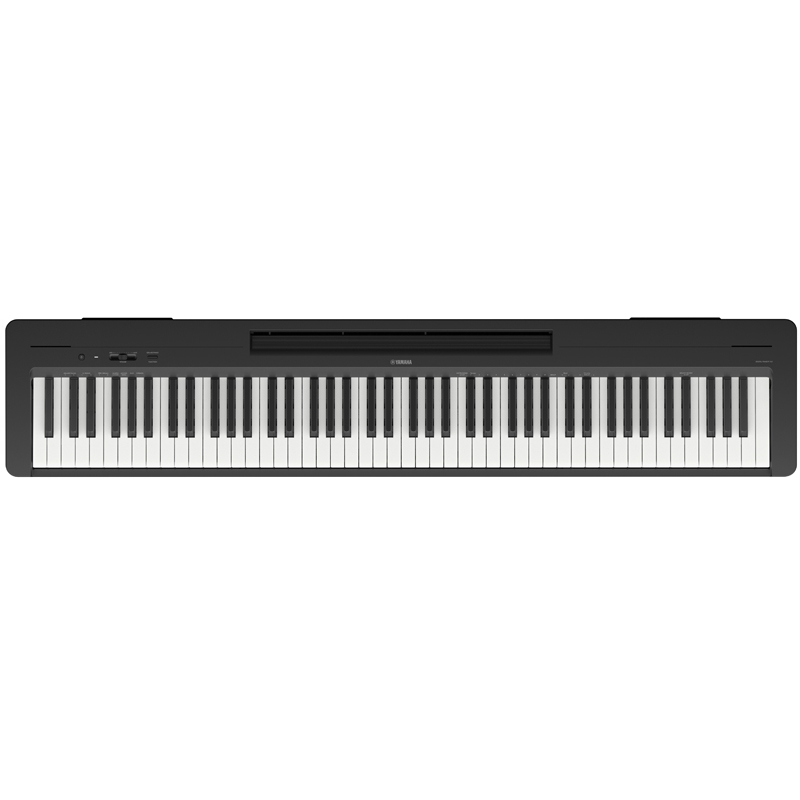
The Yamaha P-145 is the company's latest beginner-focused piano and it's easily one of the best digital pianos for beginners on the market. You get the reassurance of Yamaha’s fine musical pedigree (and experience in the world of Yamaha keyboards), combined with the brand’s top-notch sounds.
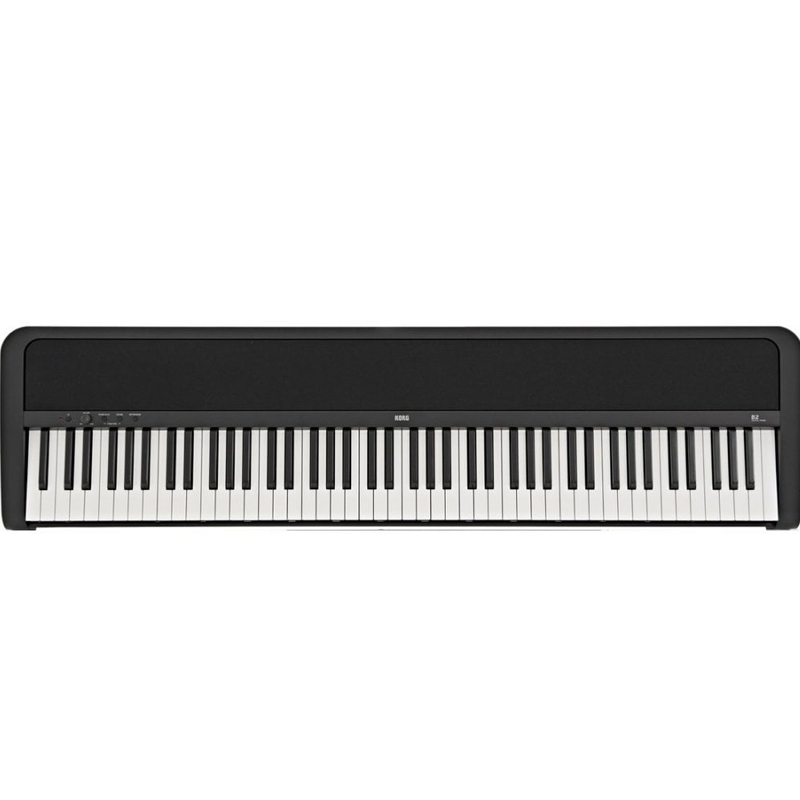
The Korg B2 impresses with its sleek and uncluttered design, reminiscent of a traditional piano. It features an 88-key setup with Korg’s Natural Weighted Hammer Action, and while it may not be the most authentic-feeling piano, it certainly is a lot of fun to play.

Equipped with Yamaha's Grand Expression Modelling technology, the CSP-255 brings your playing to life, reflecting the nuances of touch that affect tone.
Load the next 2 pianos
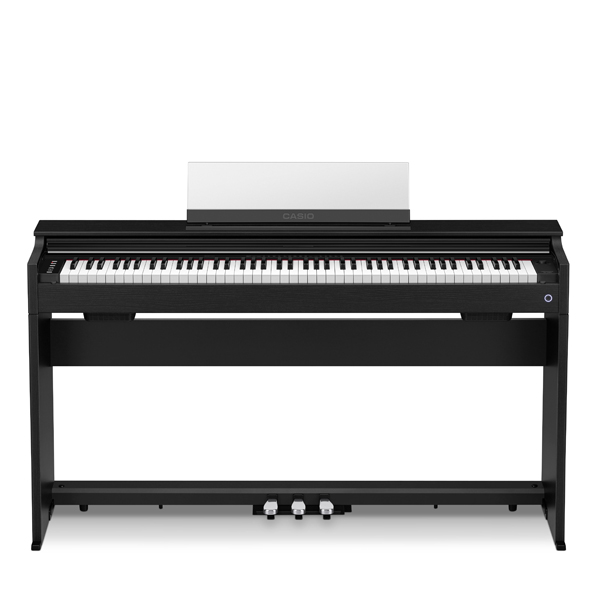
I’m glad to report that the AP-S200 is much like the rest of Casio’s pianos; it’s constructed with high-quality materials, and it feels very durable and well-built.
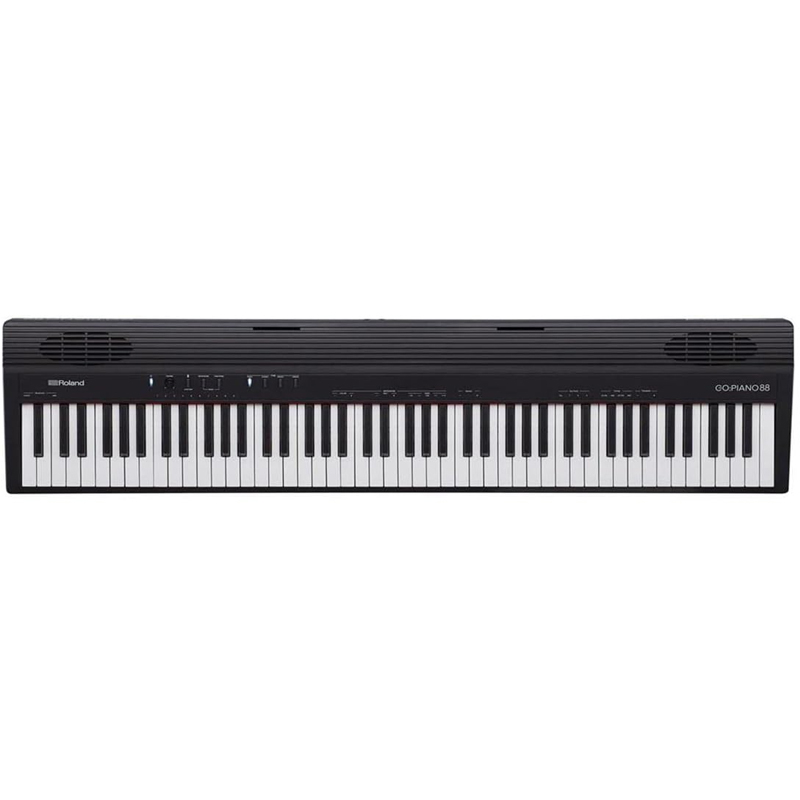
Roland's new GO:PIANO 88PX takes ultra-portability to the next level. Weighing just 5.8 kg and measuring a compact 128 x 27.6 cm, it’s lighter and easier to transport than its predecessor.
Best cabinet-style
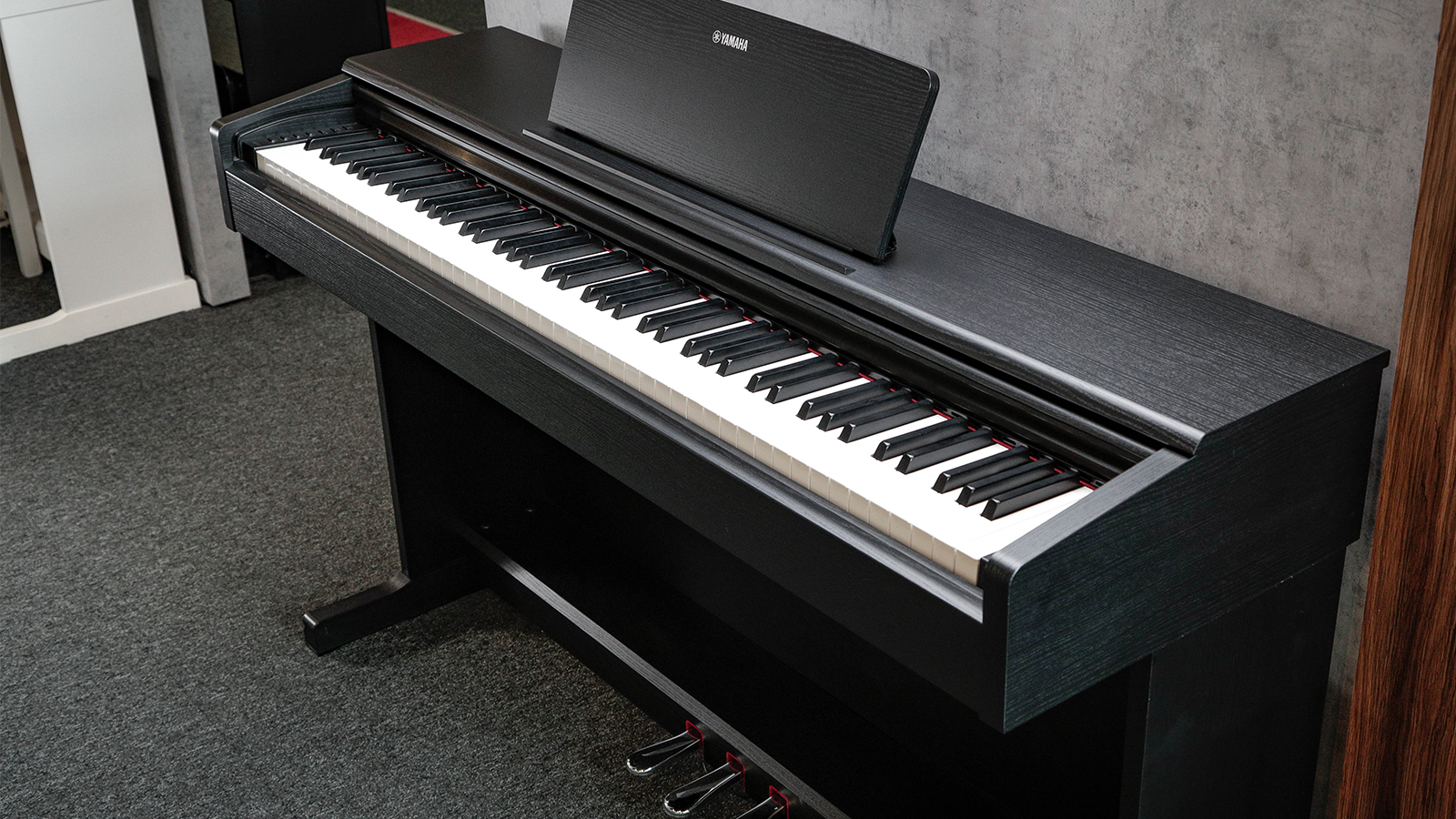

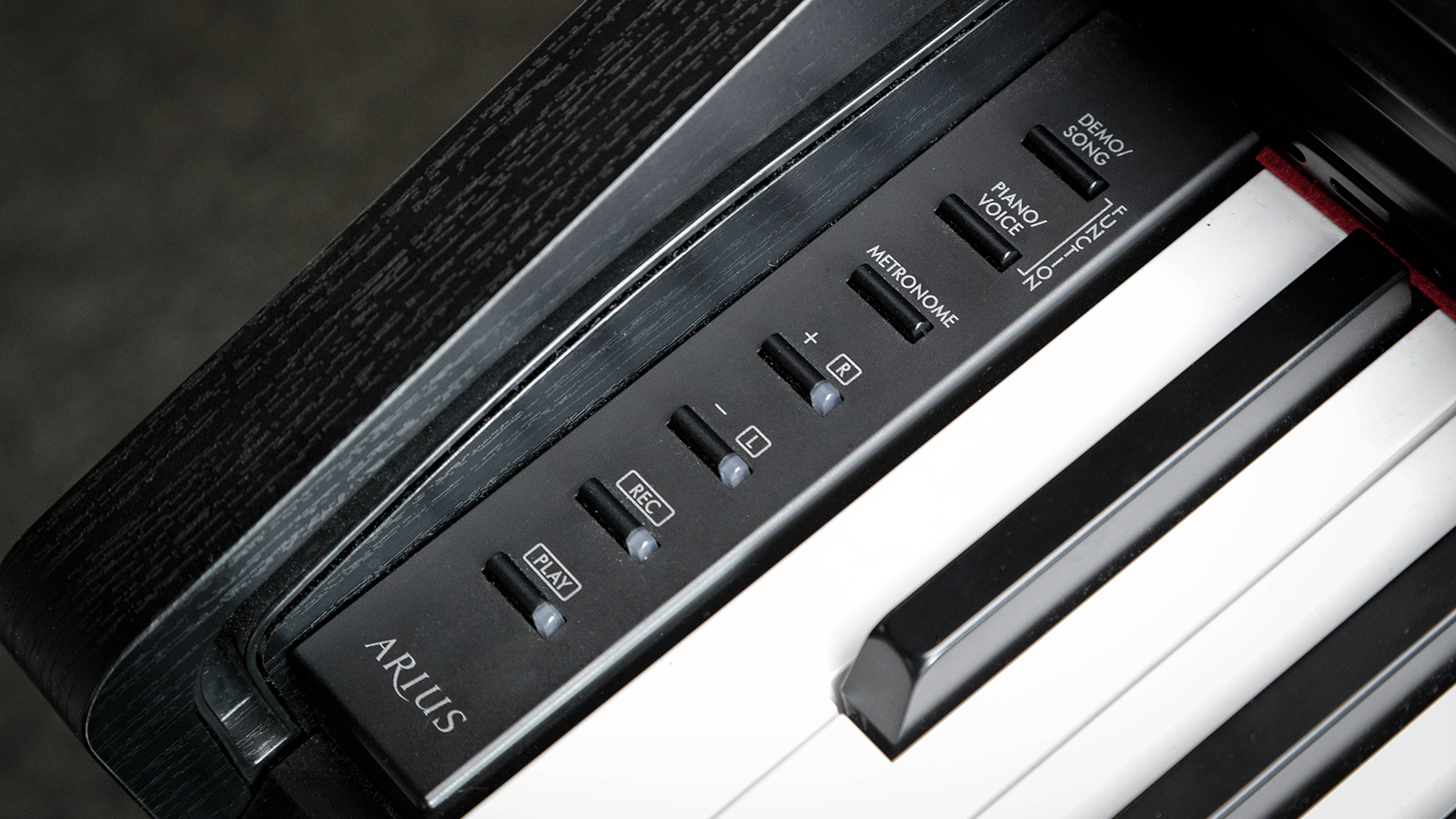
Specifications
Reasons to buy
Reasons to avoid
✅Buy if you want the best grand piano sound: Loaded with Yamaha's CFX concert grand piano, the YDP-S55 delivers a very realistic piano tone.
❌Avoid if you want to need Bluetooth functionality: Unfortunately, this Yamaha doesn't support Bluetooth for audio or MIDI.
Build: ★★★★☆
Sound: ★★★★☆
Playability: ★★★★☆
Build: At this level, your additional investment includes an upgraded speaker system and a lidded cabinet stand with a three-pedal setup, which will support you through ABRSM Grade 4 lessons and beyond. Available in black or white with a 3-month Flowkey online lesson membership included, the S55 is a worthwhile choice over the S35 for those who don’t have the space for a full-size model.
Sound: To my ears, the meticulously sampled CFX grand piano tone is excellent, and the reduced depth of the cabinet doesn't have the detrimental effect on the sound that you might expect.
Playability: In my view, there are two main ingredients that make a great digital piano - an excellent grand piano tone and superb keyboard, and both of these are fully addressed in the brilliant Yamaha YDP Arius YDP-S55. The keybed is responsive, slick and very expressive. This piano may not have as heavy an action as you’d typically expect from Yamaha, but that is actually a positive when it comes to beginners. This is a fantastic instrument and one of the best digital pianos under £1,000.
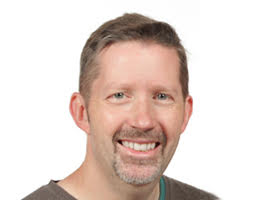
"The S55 is a brilliant choice for space-strapped beginners or more advanced pianists who don't need loads of extra bells and whistles, although Smart Pianist compatibility does up the ante somewhat in terms of extra features and ease of use."
Read our full Yamaha Arius YDP-S55 review
Best beginner piano overall
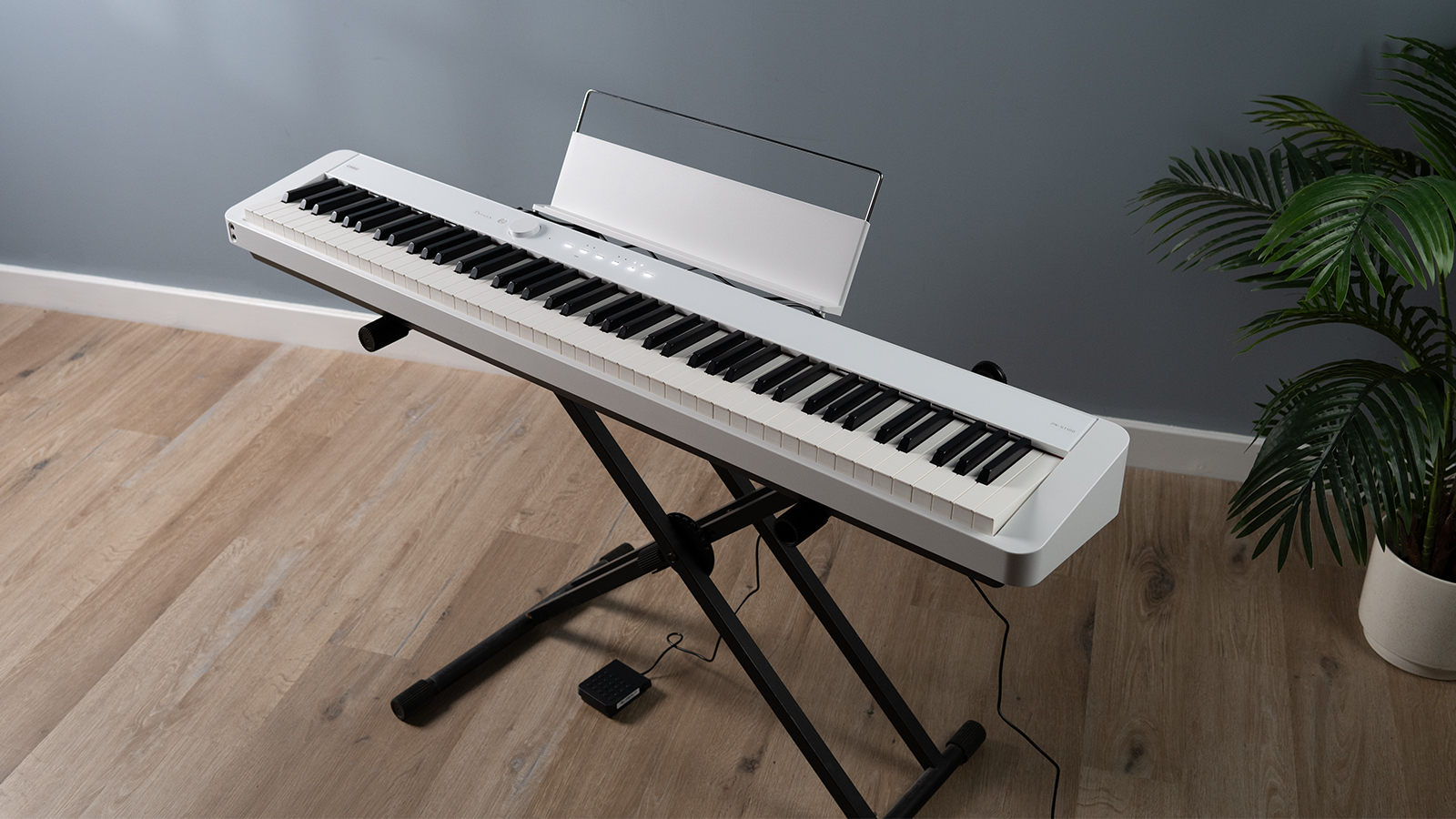
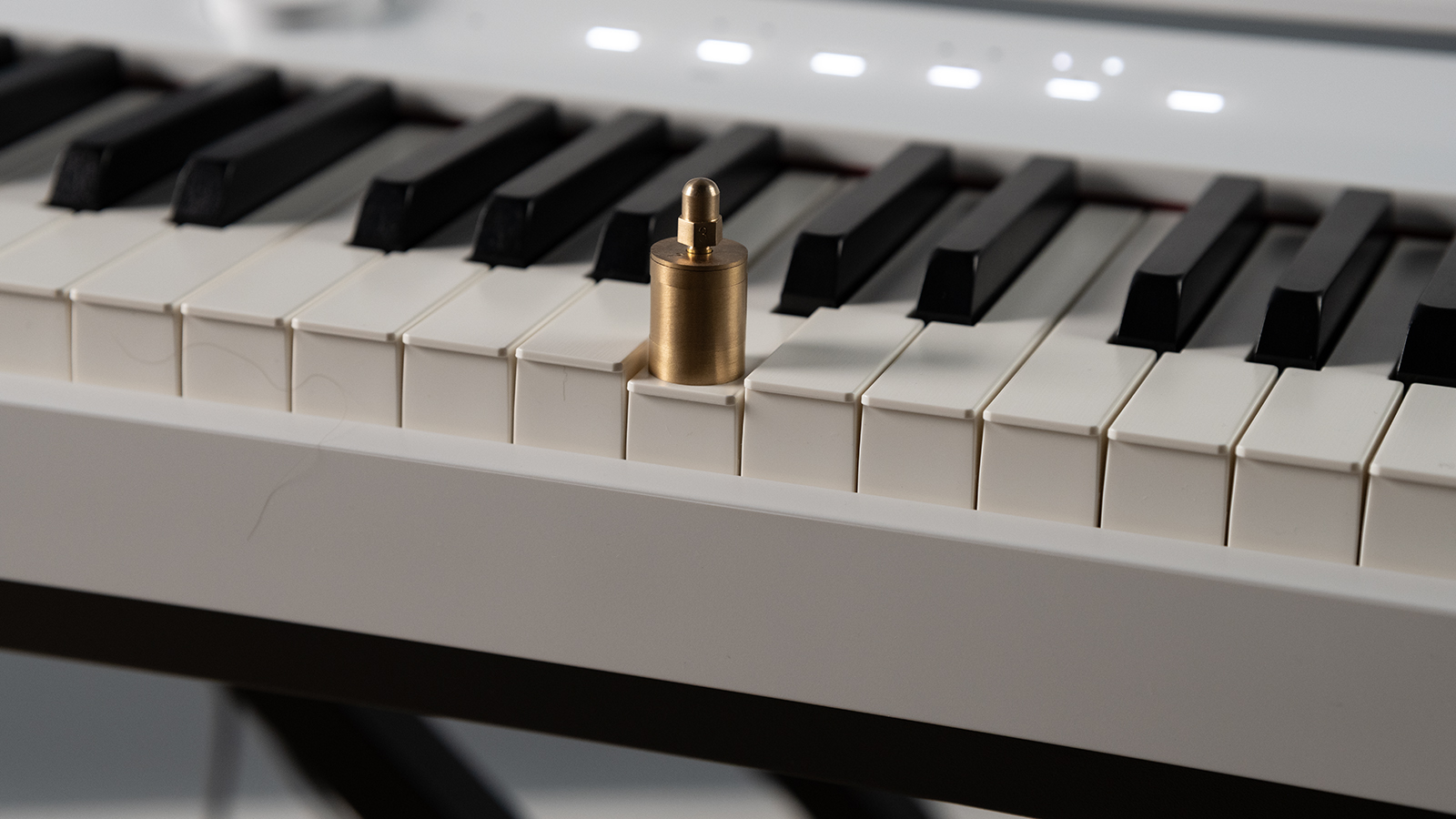
Specifications
Reasons to buy
Reasons to avoid
✅Buy if you want a slim piano: This Casio is about as slim as pianos get, so if you're limited on space, this is the piano for you.
❌Avoid if you like editing sounds: Unfortunately, this piano doesn't allow you to save user-edited sounds.
Build: ★★★★ ½
Sound: ★★★★☆
Playability: ★★★★☆
Build: The PX-S1100 builds on its predecessor by adding the modern features today’s budding pianists demand. With its neat and tidy build, which looks sleek, modern, and simple, the PX-S1100 is an inviting piano to play. New for the S1100 is the ability to stream audio and MIDI wirelessly via the included WU-BT10 USB adapter. This handy new feature is sure to revolutionise your practice routine, allowing you to play along with your favourite songs and even take advantage of popular online piano lessons.
Sound: The PX-S1100 features an upgraded speaker system, which marks a significant improvement over its predecessor. This enhanced audio quality ensures that the piano not only looks good but sounds great too - and with 18 voices from grand pianos to strings, there are plenty of fun and engaging sounds to play with.
Playability: In my opinion, this 88-note, fully weighted keys piano is perfect for aspiring players looking for an affordable instrument that doesn’t scrimp on quality. The action here is light, but not spongy, making it perfect for inexperienced players new to the instrument.
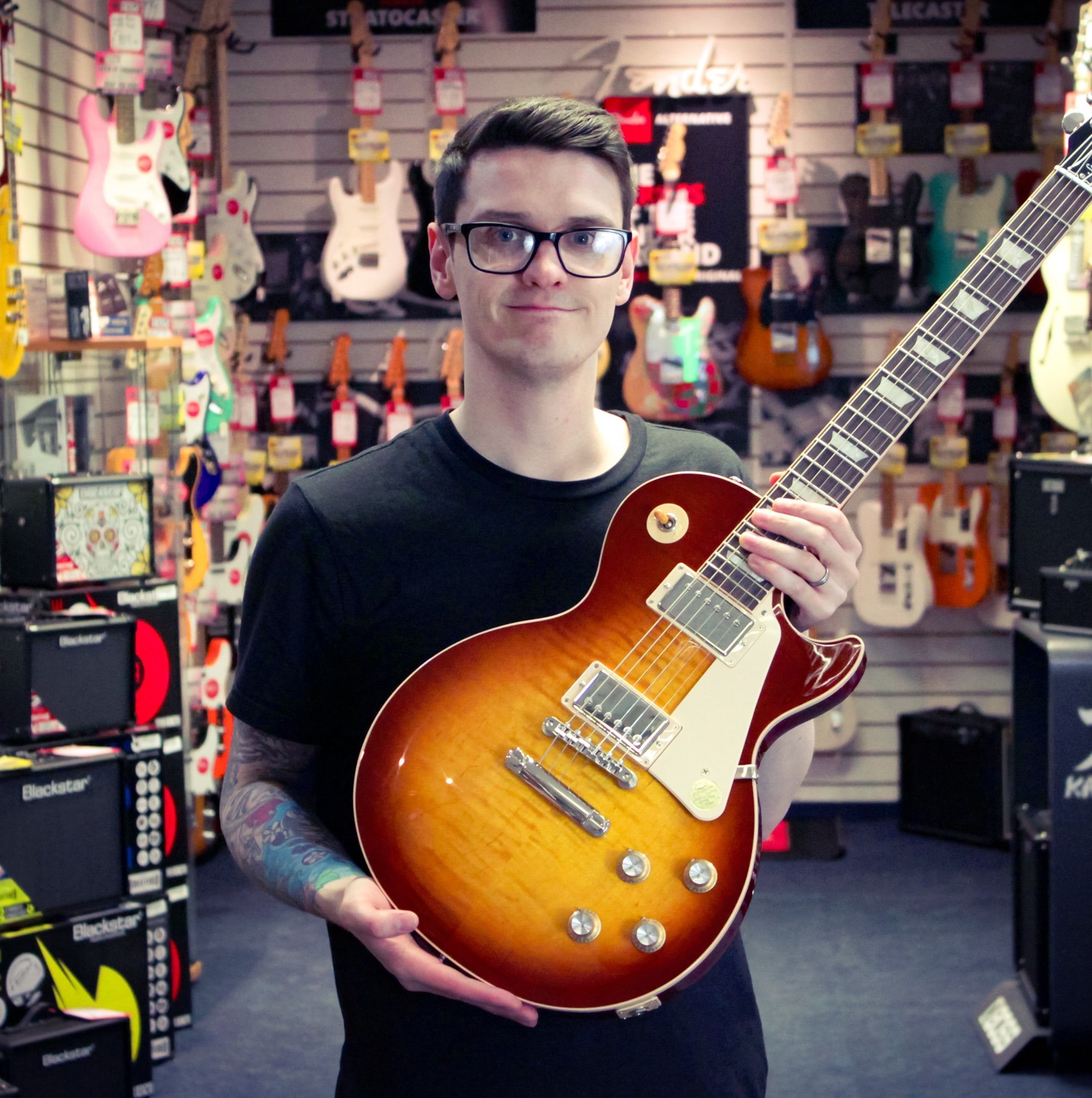
"The Casio PX-S1100 builds on the previous model and brings it into the modern-day with smart features including Bluetooth audio and MIDI, as well as a fantastic new speaker system that delivers stellar sound at an accessible price point."
Read more: Casio PX-S1100 review
Best on a budget
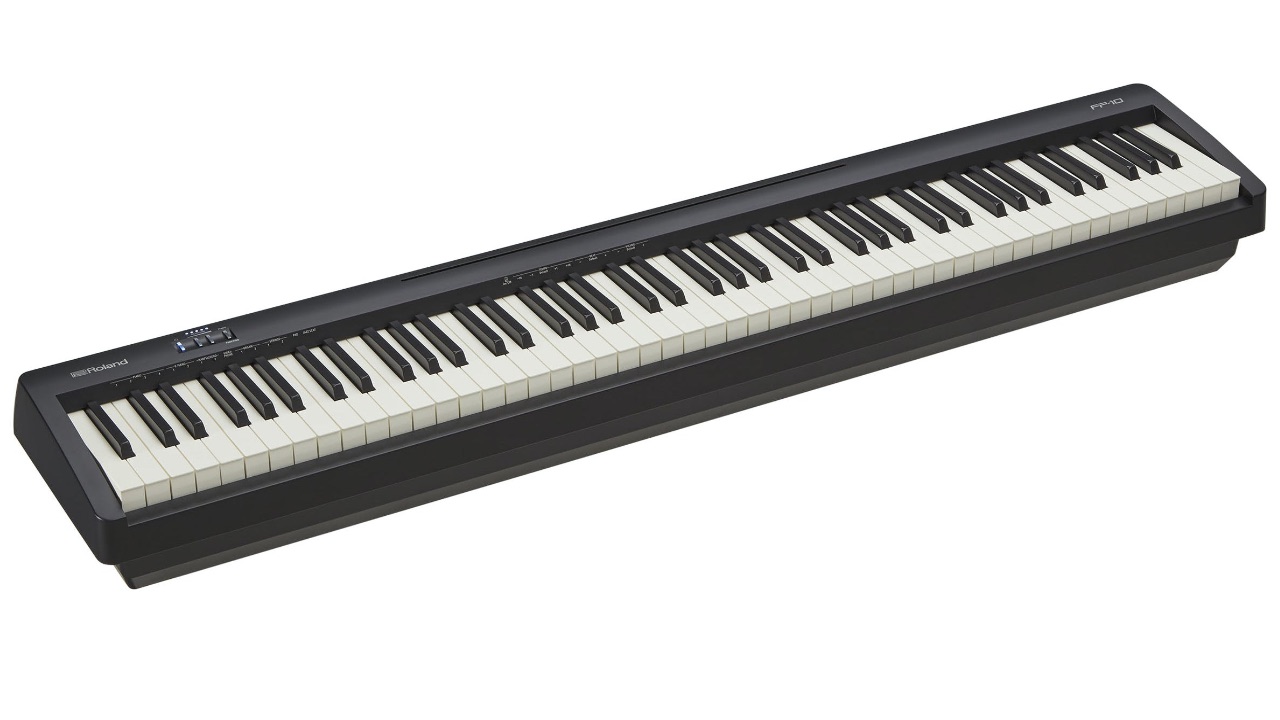
Specifications
Reasons to buy
Reasons to avoid
✅Buy if you want a great key action on a budget: Roland's PHA-4 keybed is a joy to play and is our favourite feature of this beginner piano.
❌Avoid if you need a loud piano: Unfortunately, this piano doesn't have the best speakers. It can sound a little thin at times - we recommend using headphones.
Build: ★★★★ ½
Sound: ★★★★☆
Playability: ★★★★½
Build: The FP-10 may be Roland’s entry-level, full-size digital piano, but that doesn’t mean it doesn’t measure up when it comes to build quality. This piano feels robust and very well put together. I love the way it looks, too. In our glowing review, we mentioned “The FP-10’s top panel is a masterclass in minimalism, the only controls being four illuminated buttons on the left-hand side - one for powering on, two for adjusting volume, and a fourth ‘piano function’ switch.”
Sound: The piano comes with fifteen onboard sounds, with the standout voices being the four high-quality acoustic piano tones that have only slight variations in their characteristics. These acoustic piano sounds are full, rich, and incredibly detailed, sourced from the same SuperNatural sound set found in Roland's higher-end models. This means it includes advanced features like simulated sympathetic string resonance, damper resonance, and key-off resonance. Unfortunately, we found that the speakers could be pretty weak-sounding to our ears at times, but for the money, there had to be at least one flaw.
Playability: All 88 keys are individually weighted with different weights, as you’d find on an acoustic piano, delivering one of the most authentic-feeling keybeds in this price bracket. MIDI via both USB and Bluetooth means that the FP-10 plays nicely with Roland’s excellent Piano Partner 2 app, and also makes a great MIDI controller keyboard. Check out more of the best Roland digital pianos in our guide.

"Adhering to the principle that simplicity is key, the FP-10 combines a superb piano sound and an excellent weighted keybed into an affordable, no-frills instrument that truly hits the target for beginners and intermediate players."
Read more: Roland FP-10 Digital Piano review
Best for reliability
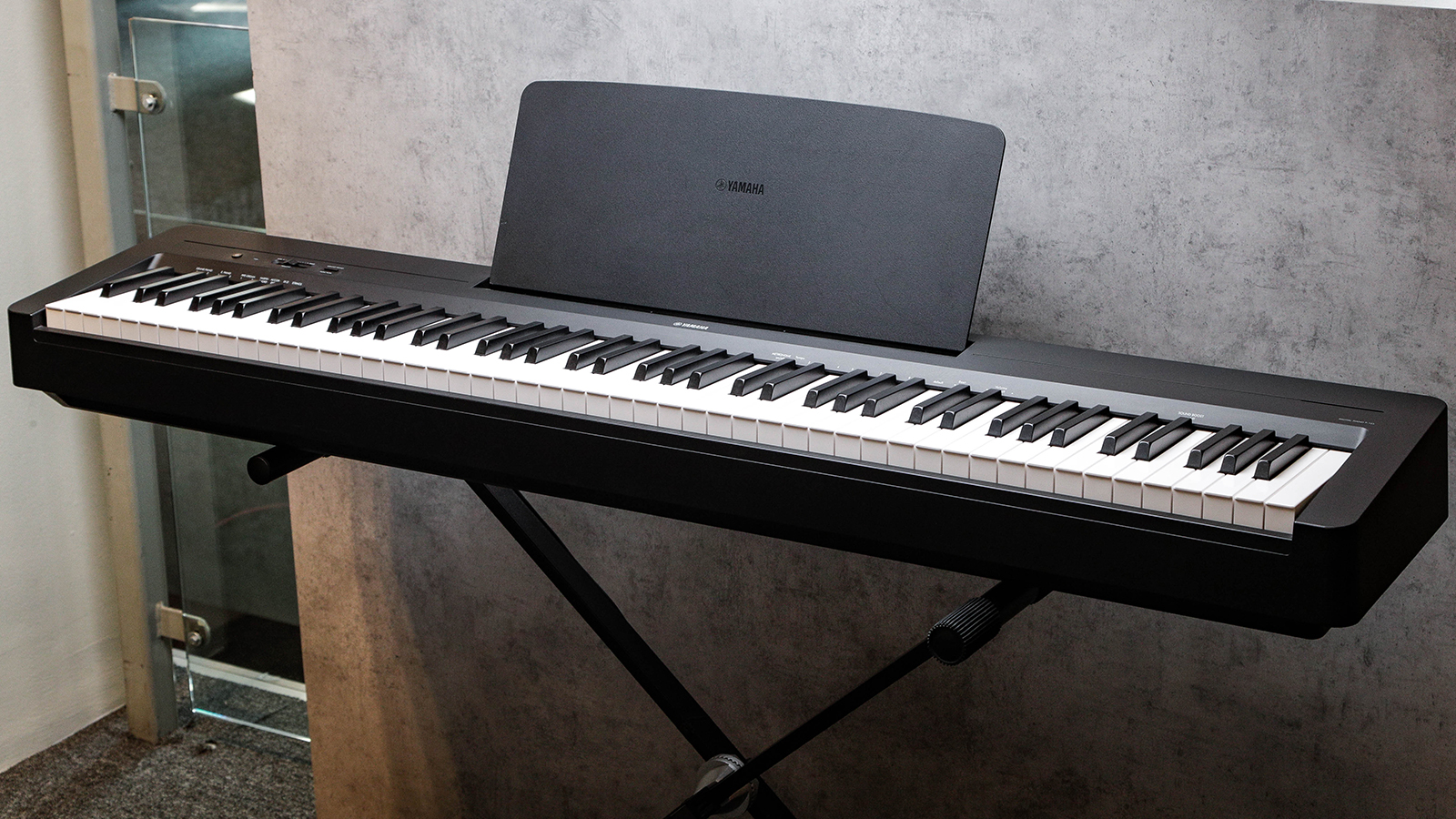
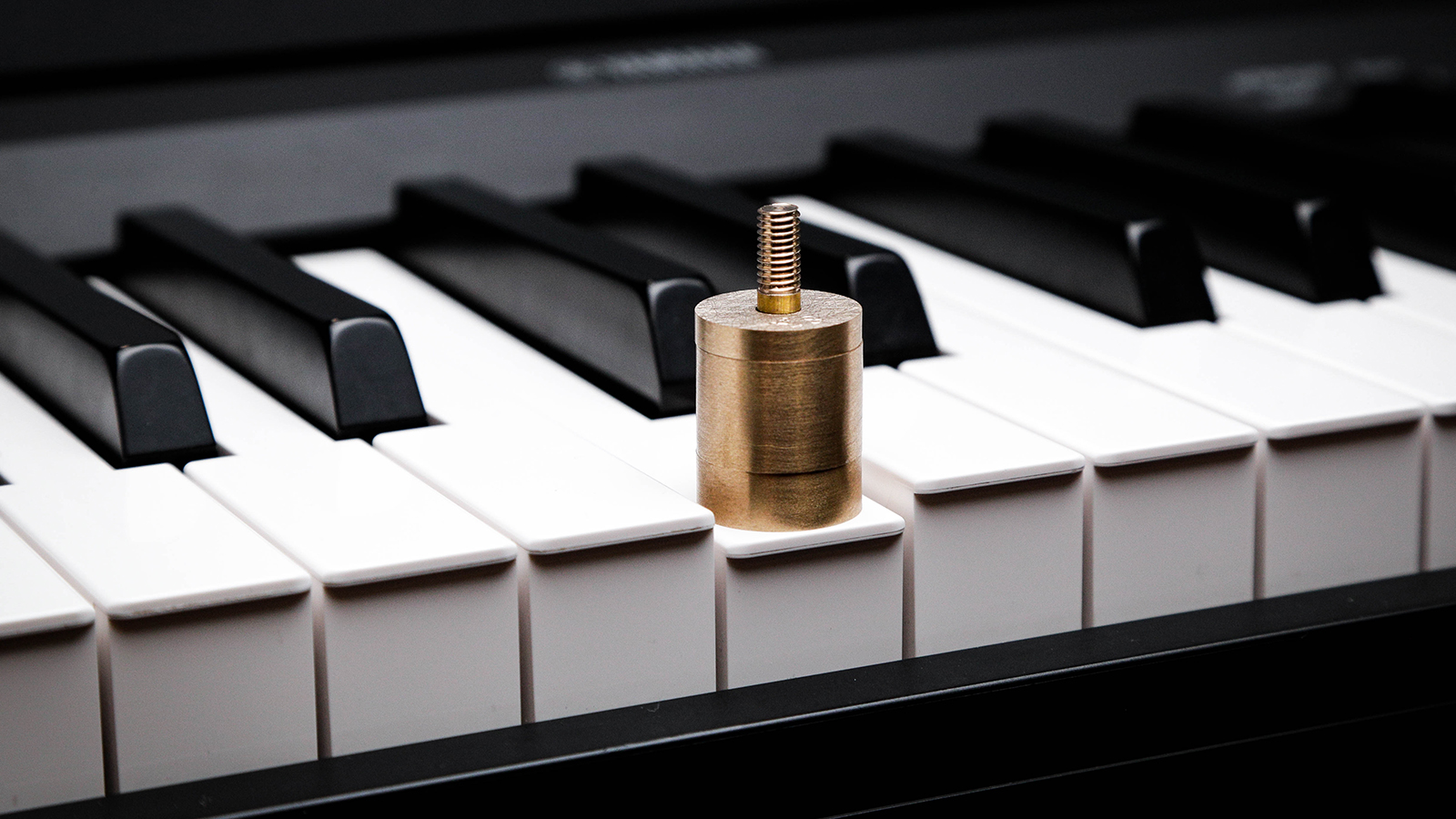
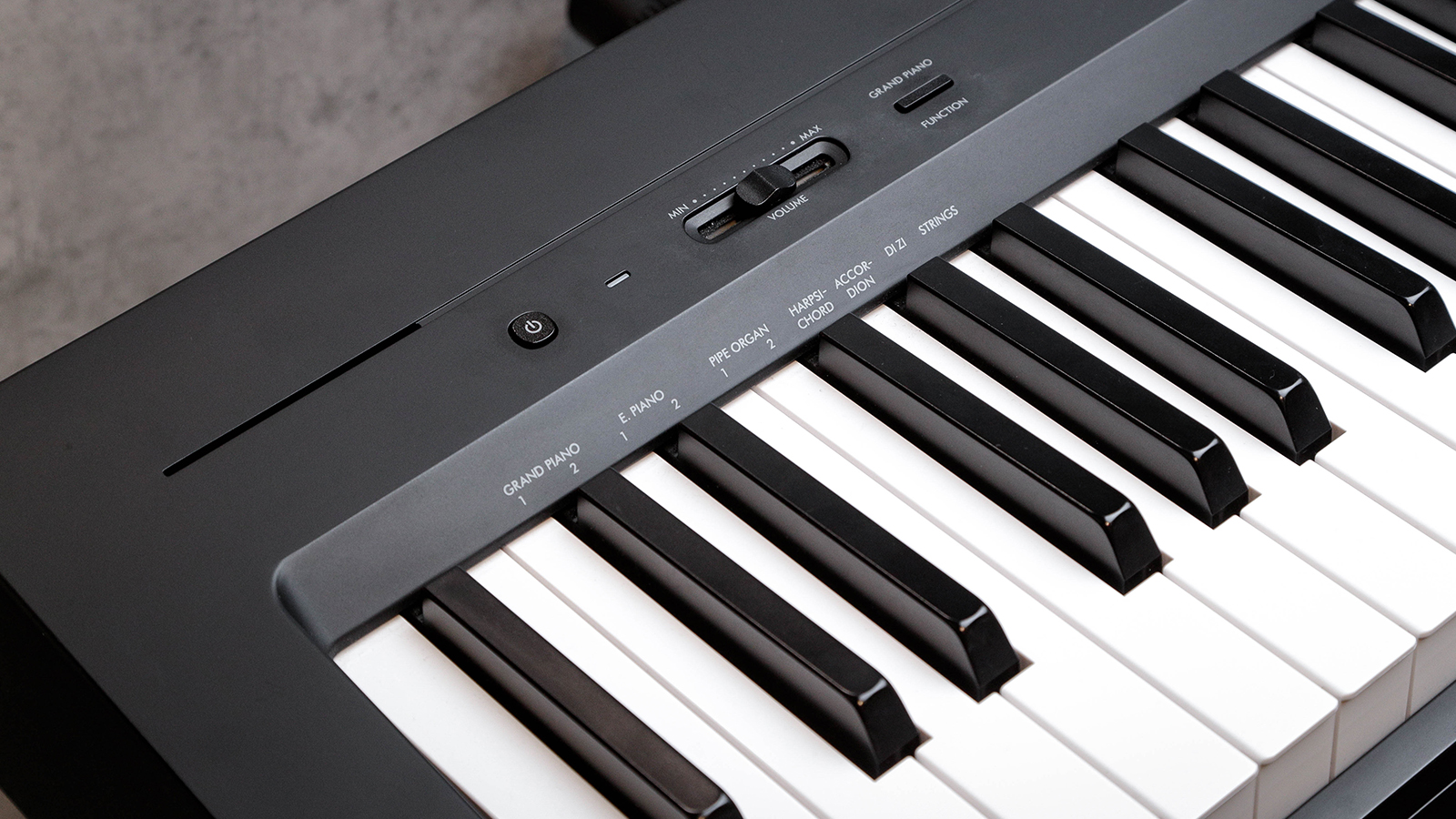
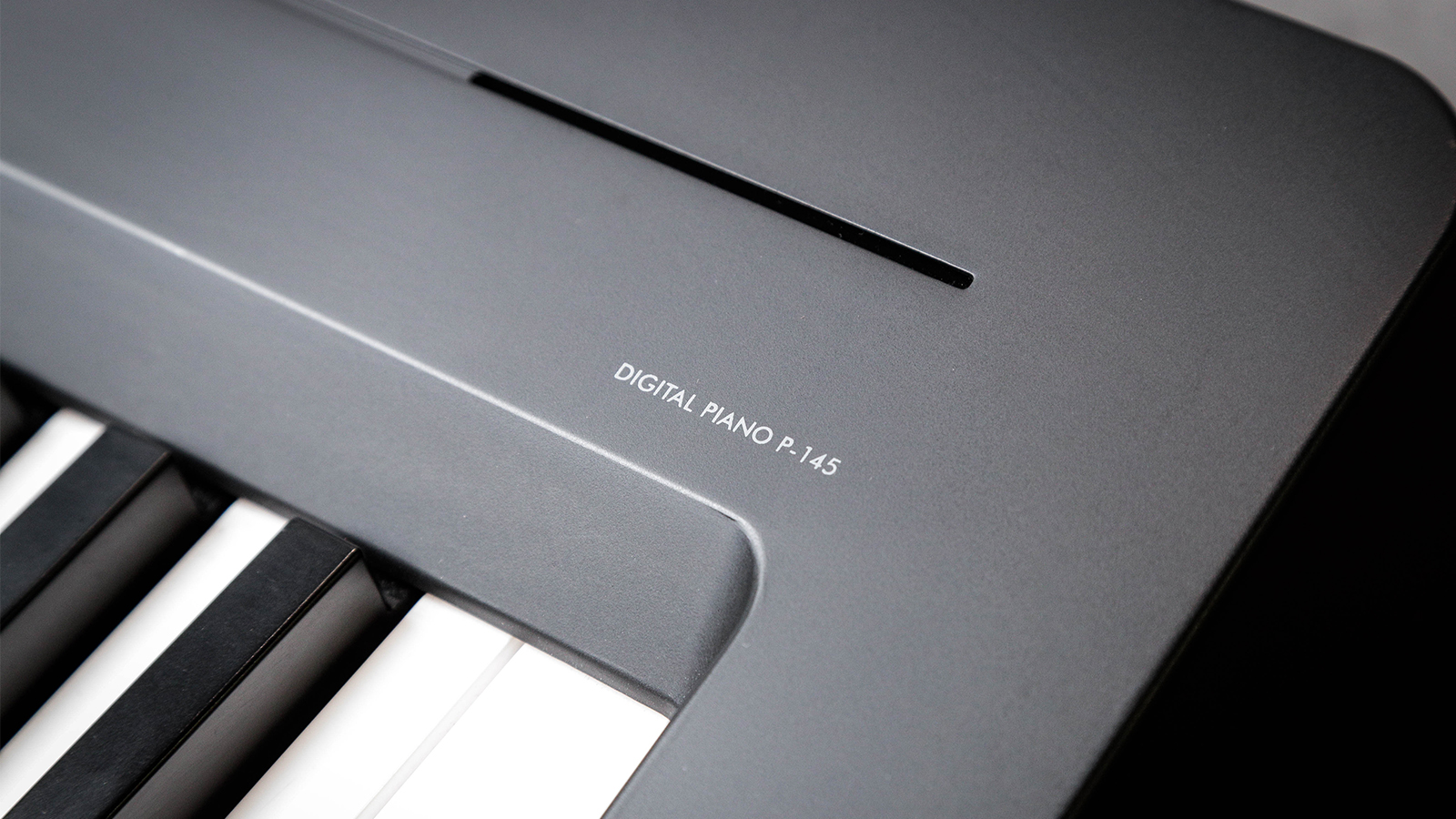
Specifications
Reasons to buy
Reasons to avoid
✅Buy if you want a reliable option: Yamaha makes the most reliable instruments in the game and the P-145 is no different.
❌Avoid if you want to use apps: The P-145 doesn't support smartphone app integration like other options on this list.
Build: ★★★★ ½
Sound: ★★★★☆
Playability: ★★★★☆
Build: The P-145 is arguably Yamaha's most popular beginner-focused piano, and it's easy to see why. You get the reassurance of Yamaha’s fine musical pedigree (and experience in the world of Yamaha keyboards), combined with the brand’s top-notch sounds. True, it may be a little light on features compared to some of its peers, but as an entry into the world of Yamaha digital pianos, the P-145 still represents great value for money, backed up by a peerless heritage.
Sounds: With only 10 voices included, and four levels of reverb, there isn’t a great deal of tones when compared to others on the market. That said, Yamaha is going for quality over quantity here. The core piano sounds are excellent, while the electric pianos are fun and satisfying to play.
Playability: The P-145 comes loaded with the excellent Graded Hammer Compact keyboard, which does a valiant effort to represent the nonlinear response of an acoustic piano's keyboard, with lower notes having a slightly different action than the higher register. Okay, it's a subtle difference that isn't immediately noticeable, but in my opinion, it helps add a layer of realism to the instrument.
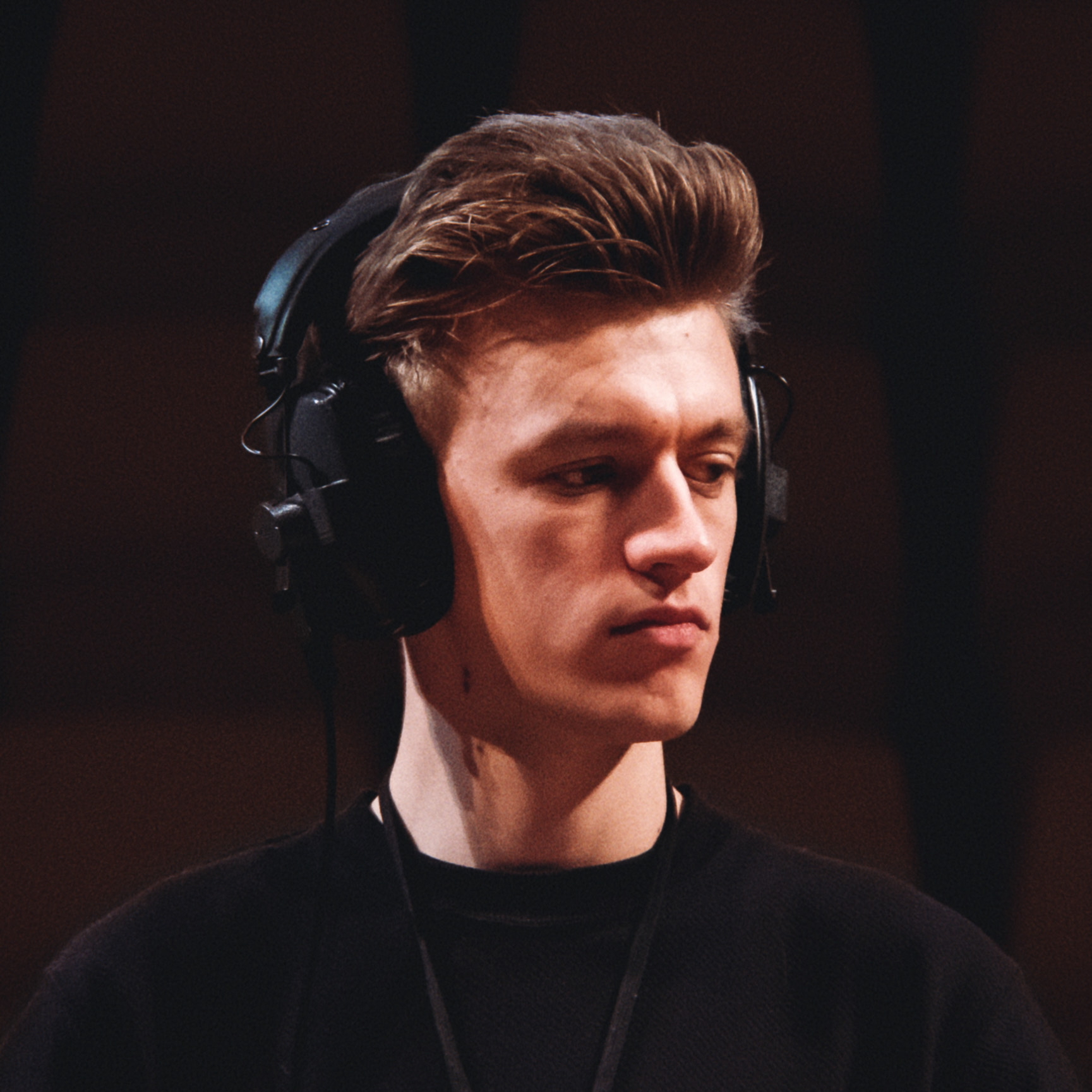
"Yamaha's P-45 was most definitely one of the most popular beginner pianos on the market, and it was easy to see why. It was robust, compact and offered players an authentic feeling instrument at a stellar price. The latest iteration - the P-145 - stays within the guidelines of the previous unit but manages to shrink the model to an even more compact size, making it more portable."
Read more: Yamaha P-145 review
Best for kids

Specifications
Reasons to buy
Reasons to avoid
✅Buy if you want great sounds on a budget: This is one of the best-sounding beginner pianos on this list.
❌Avoid if you want to upgrade the sustain pedal: Unfortunately, Korg uses their own proprietary sustain pedal connection, meaning you can't use a third-party pedal.
Build: ★★★★☆
Sound: ★★★★½
Playability: ★★★★☆
Build: The Korg B2 impresses with its sleek and uncluttered stage piano-like design. It features an 88-key setup with Korg’s Natural Weighted Hammer Action, and while it may not be the most authentic-feeling piano, it certainly is a lot of fun to play. The streamlined button layout enhances the piano-like aesthetic, making it visually appealing for beginners and seasoned players alike.
Sounds: The B2 is equipped with 12 high-quality voices that cater to various musical styles. With five excellent piano sounds derived from a new engine, plus fun electric piano, organ, harpsichord, and strings tones, it’s perfect for those who want versatility without overwhelming options. To me, the piano tones are bright and articulate, making it a joy to play.
Playability: When it comes to playability, the B2 stands out for its smooth and responsive action, striking the right balance for beginners. While it may not compete with high-end models, it offers a remarkably enjoyable experience at this price point.

"The Korg B2 is clearly a vast improvement over its somewhat lacklustre predecessor, bringing 12 well-voiced tones and a comfortable key action to anyone looking to make their piano-playing maiden voyage. While this piano may not be jam-packed with features like other beginner-friendly digital pianos on the market, it does offer players a no-nonsense instrument at a very attractive price."
Read more: Korg B2 review
Best for families
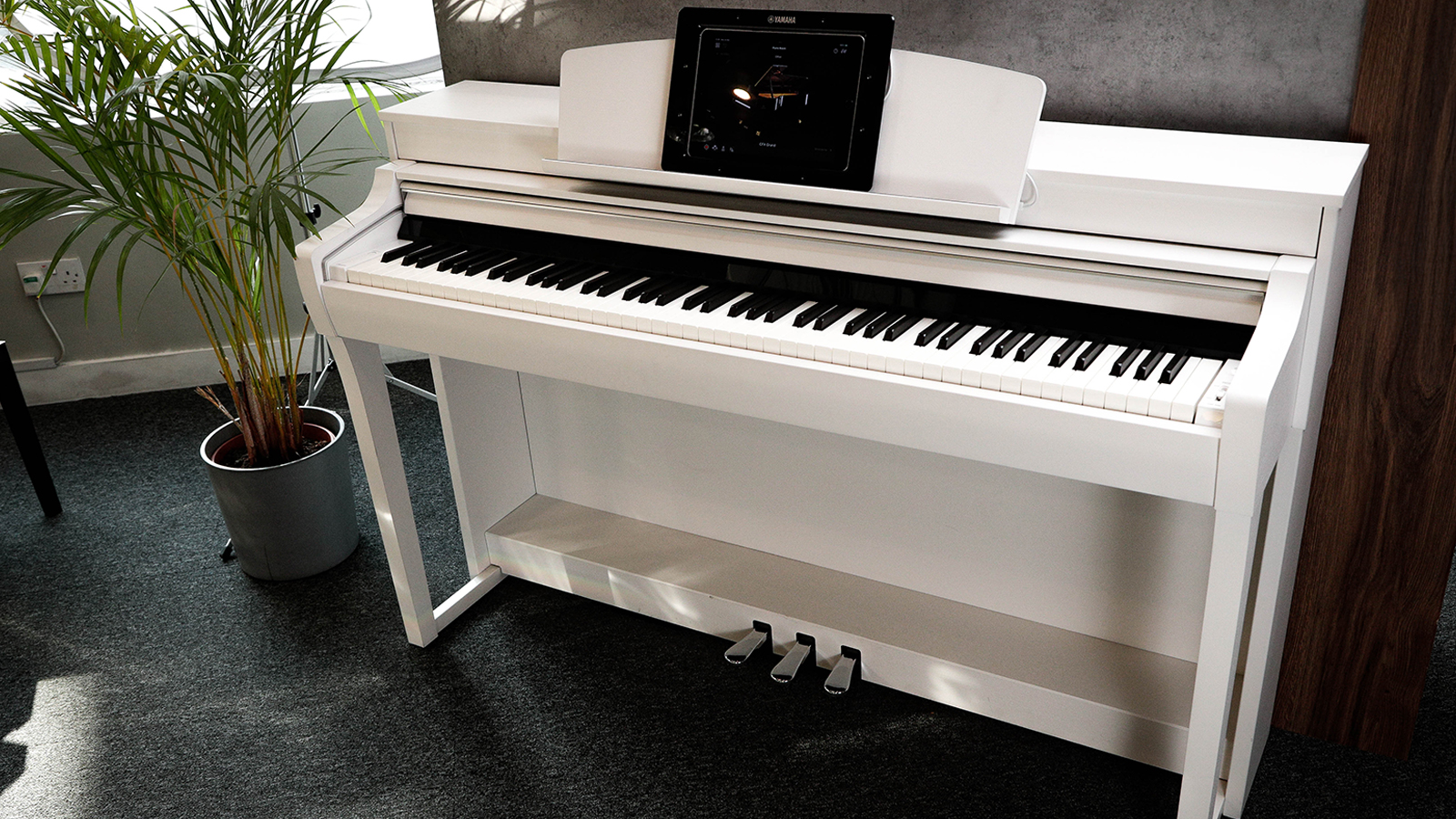
Are you a family of piano players? Well, this piano will work for newbie kids all the way to experienced adults
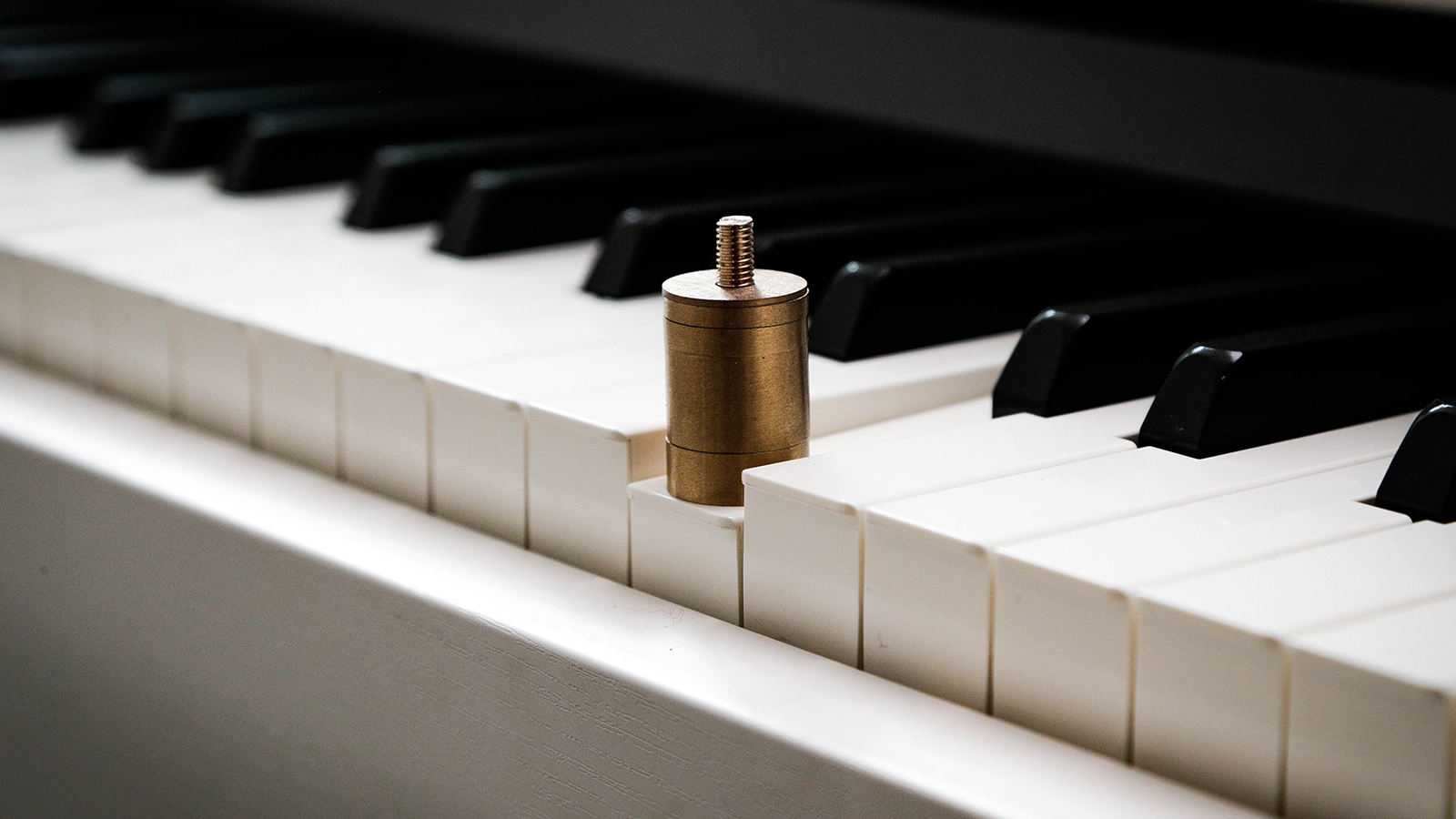
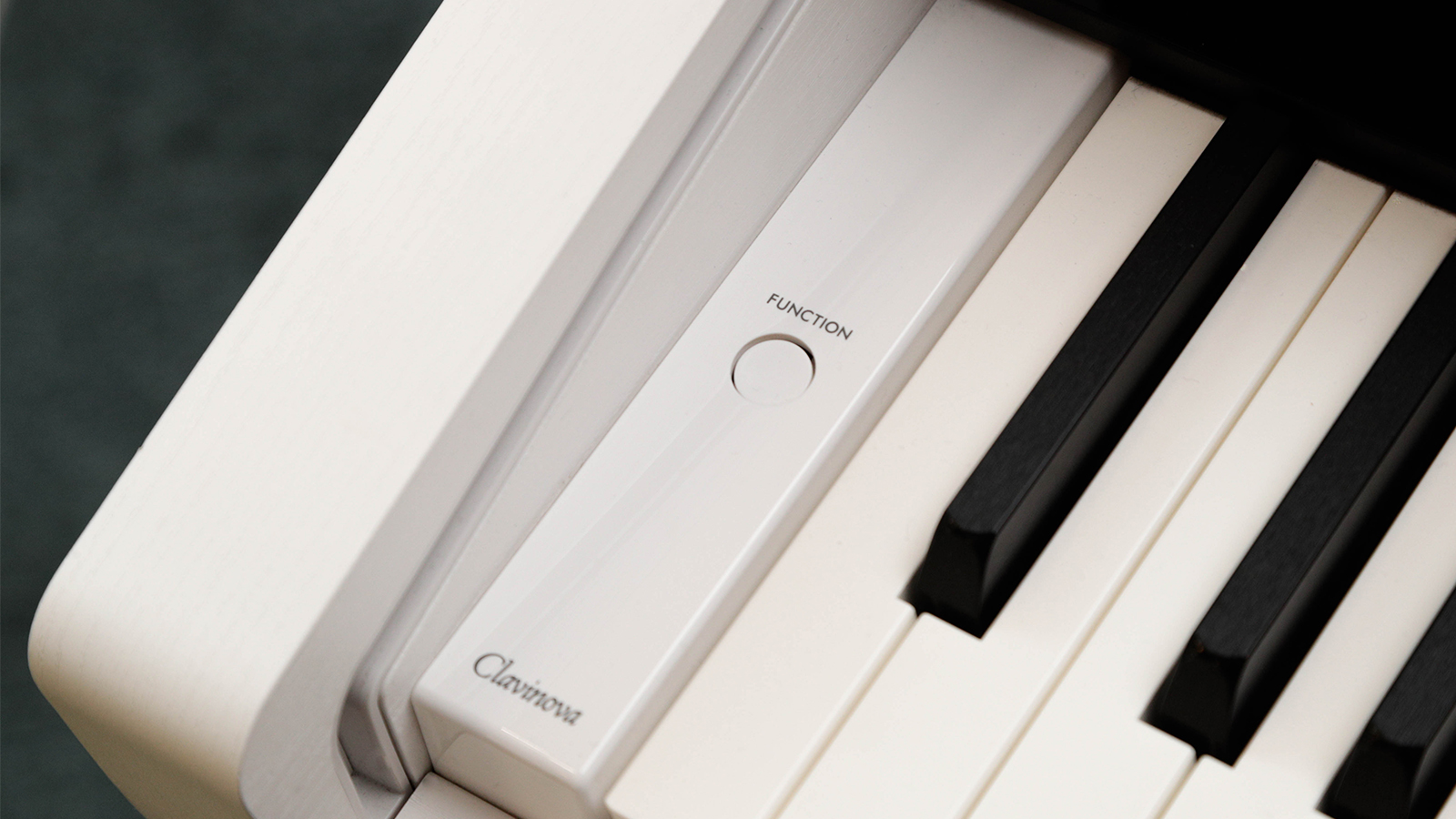

Specifications
Reasons to buy
Reasons to avoid
✅Buy if you have a family of learners: This is the ultimate family piano. Sophisticated enough for adults and fun enough for kids.
❌Avoid if you don't like apps: To get the best out of this piano, you need to use it with an iPad and the Yamaha apps.
Build: ★★★★☆
Sound: ★★★★½
Playability: ★★★★☆
Build: The Yamaha CSP-255 is the most compact model in the Clavinova range, combining elegant design with modern features. I love how it manages to mirror the curves of an acoustic piano while remaining space-efficient. Available in stylish black, white, and polished ebony finishes, it offers both beauty and functionality. The user-friendly interface keeps function buttons minimal, allowing for a sleek aesthetic that fits any décor.
Sounds: Equipped with Yamaha's Grand Expression Modelling technology, the CSP-255 brings your playing to life, just like a "real" piano would. Featuring samples from the renowned CFX concert grand and Bösendorfer Imperial pianos, it offers rich, diverse sounds. With access to 772 different voices, 47 drum kits, and sound effects, the musical possibilities are endless!
Playability: Thanks to the Smart Pianist app, learning becomes intuitive and engaging. The innovative Stream Light technology visually guides you through playing, making practice feel like a game. With features like tempo control, looping, and multitrack recording, it caters to both beginners and seasoned players. The responsive keys and immersive experience make every practice session enjoyable.
For me, the CSP-255 truly transforms learning and playing. Yes, it may be a premium piano, but you'll be hard-pressed to find a better way to discover the piano.
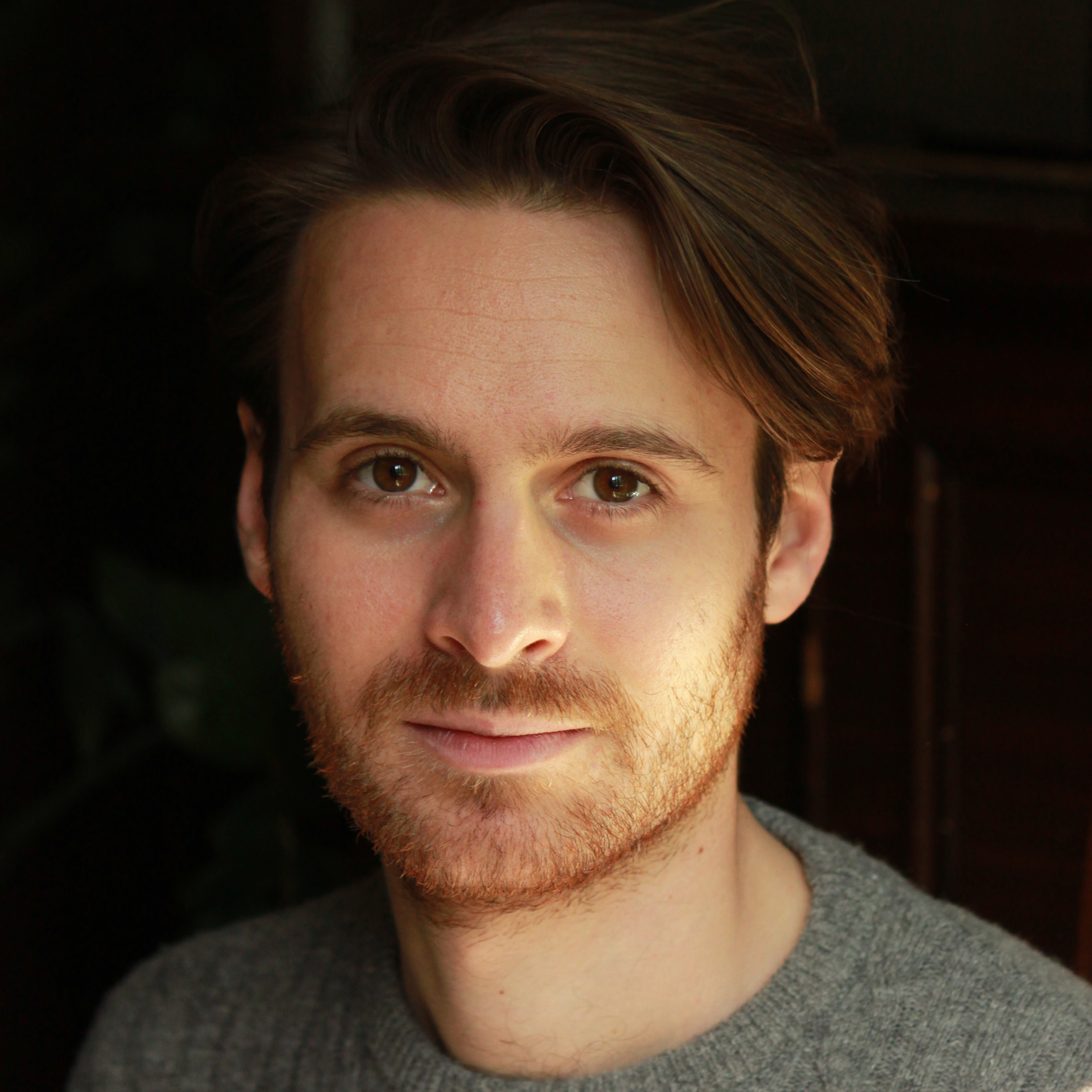
"With the CSP-255, Yamaha strikes the perfect balance of timeless design, organic playability, and immersive sound, all enhanced by groundbreaking learning technology. It’s ideal for both aspiring pianists and advanced players, but if you don’t plan on using the Smart Learning features or the Smart Pianist app, you may want to consider another model." Read more: Yamaha Clavinova CSP-255 review
Best for adults
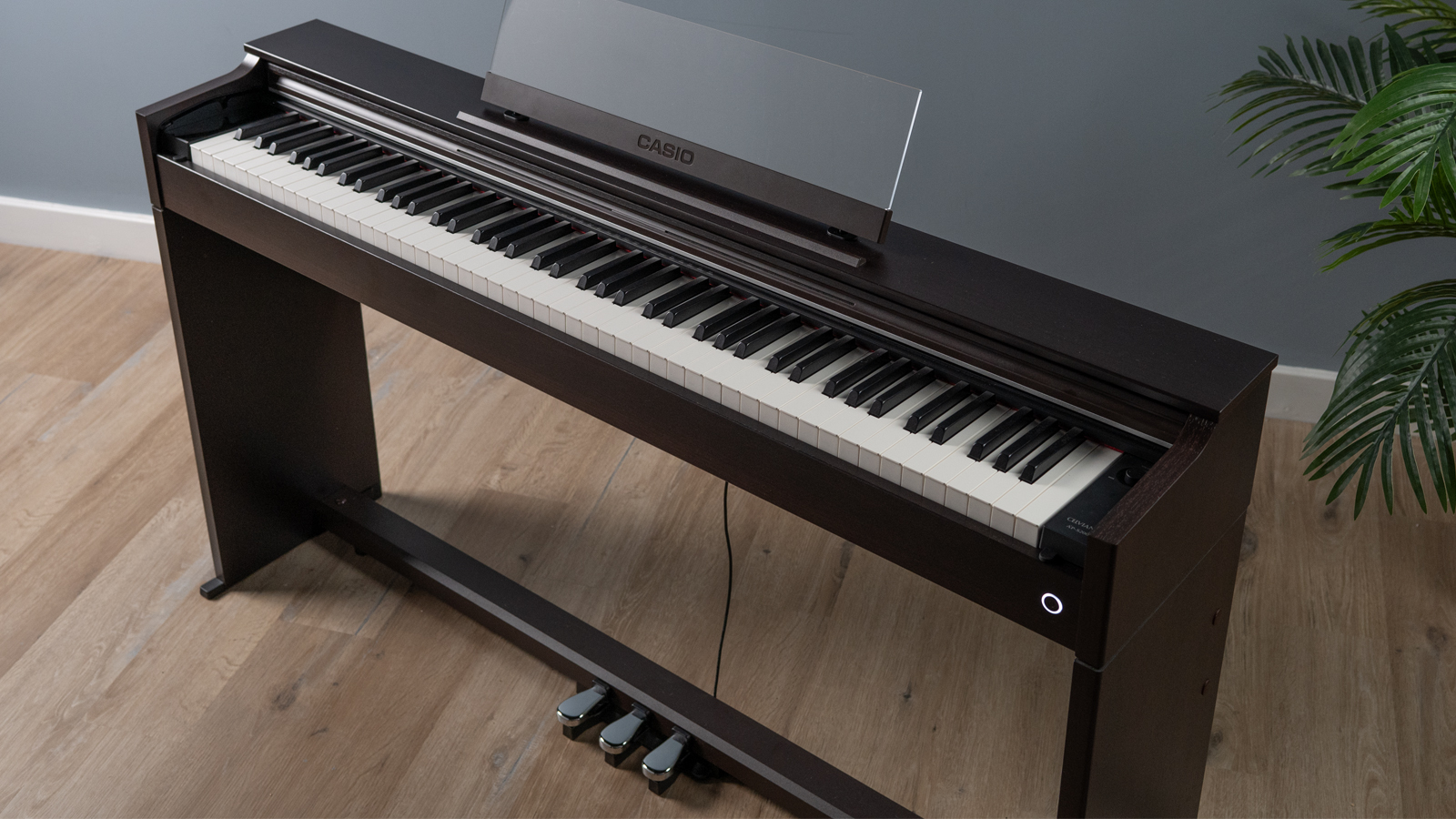
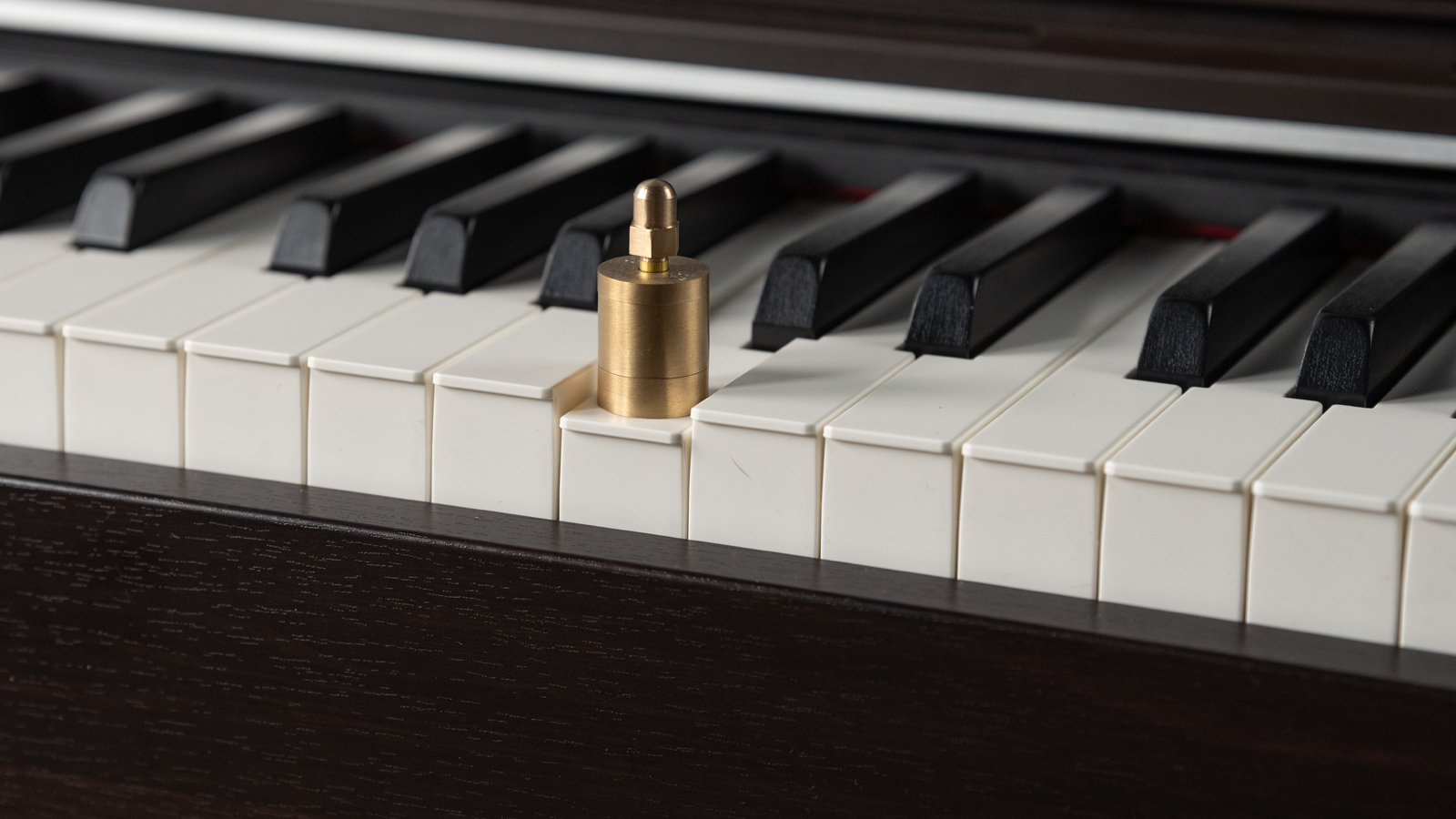
Specifications
Reasons to buy
Reasons to avoid
✅Buy if you want a console-style piano on a budget: This Casio offers players a compact design, three pedals and a comfortable action, all for a wallet-friendly price.
❌Avoid if you need a portable option: This isn't a portable piano at all, so if you need an instrument to carry to lessons, we'd recommend looking at the PX-S1100 instead.
Build: ★★★★☆
Sound: ★★★★☆
Playability: ★★★★☆
Build: I’m glad to report that the AP-S200 is much like the rest of Casio’s pianos; it’s constructed with quality materials, it feels very durable and is easy to build. Its design is sleek and modern, complementing pretty much any environment you put it in, and most importantly, it’s affordable!
Sound: The AP-S200 offers 19 built-in sounds, including three concert grand pianos and various other instruments. It features two Multi-Dimensional Morphing AiR speakers that replicate acoustic qualities, although I did find the sound to be subpar at louder volumes, with boxy mids and muffled lows. Using headphones enhances the experience, delivering immersive sound quality, especially when utilising the Surround mode.
Playability: In my opinion, the key action closely mimics that of a grand piano, allowing for nuanced expression, albeit with a lighter action overall. In our review, we say, “The key action feels remarkably organic, allowing for immersive nuances that make for an unexpectedly inspiring digital piano experience. We had a fantastic time exploring the AP-S200.”

"With its sleek, compact design, impressive playing experience, and reasonable price, the Casio AP-S200 is an excellent choice for both beginners and seasoned players. While the speaker quality shouldn’t be overlooked, it still delivers a performance that rivals that of more expensive instruments." Read more: Casio Celviano AP-S200 review
Best for portability

Specifications
Reasons to buy
Reasons to avoid
✅Buy if you want a truly portable option: This is one of the lightest pianos on this list, making it the best for portability.
❌Avoid if you want fully-weight keys: This Roland utilizes semi-weighted keys in an effort to keep the weight down. So, if you require fully-weighted keys, then look elsewhere.
Build: ★★★★☆
Sound: ★★★★☆
Playability: ★★★★☆
Build: Roland's new GO:PIANO 88PX takes ultra-portability to the next level. Weighing just 5.8 kg and measuring a compact 128 x 27.6 cm, it’s lighter and easier to transport than its predecessor. Its sleek design mirrors a classic home digital piano, featuring a streamlined control panel with buttons for volume, Bluetooth, and metronome, along with two cleverly positioned speakers delivering a crisp sound.
Sounds: This model boasts a brand-new sound engine and 40 built-in sounds, plus an additional 256 accessible through the Roland Piano app. The rich new grand piano sound, enhanced by sympathetic resonance modelling, creates a more immersive playing experience. While polyphony drops to 64 voices, it's a smart trade-off for maintaining sound quality in a compact format.
Playability: Equipped with 88 touch-sensitive keys featuring an ivory-textured surface, the keyboard ensures a natural feel while playing. The GO:PIANO 88PX supports half-damper functionality for nuanced expression and includes helpful tools like a twin piano function, perfect for learning and teaching. With Bluetooth connectivity and access to engaging lessons, this piano makes practicing more fun and interactive.

"Roland's new GO:PIANO 88PX is one of the most compact and lightweight 88-key digital pianos on the market. Despite its size, it delivers impressive audio quality and premium functions as well as featuring a good selection of inspired sounds. Yet, its key action may feel awkward for most, making the playing experience challenging for both experienced players and beginners - but it's still worth trying if portability is your priority." Read more: Roland GO:Piano 88PX review
Glossary of terms
Hammer Action: Refers to the mechanism in acoustic pianos where pressing a key causes a hammer to strike a string or sensor. It contributes to the weighted feel of keys, creating natural resistance and rebound that high-end digital pianos emulate.
Key Action: The mechanism controlling the feel and response of digital piano keys during play, including weight, resistance, and return speed. It's crucial for achieving an organic feel and responsiveness for expressive playing.
Modelling Technology: An advanced technique used by digital piano manufacturers to simulate acoustic piano sounds, focusing on recreating resonance, string vibration, and harmonics to enrich the instrument’s tone.
Polyphony: The number of notes a digital piano can play simultaneously. A higher polyphony count (e.g., 192) allows for more notes to be sustained without dropping, enhancing musical realism.
Sampled Sound: The recording method used to create various sounds on digital pianos. It involves carefully capturing each note to provide an immersive playing experience.
Touch Sensitivity: Often used interchangeably with dynamic sensitivity, this term describes how a piano responds to the speed and force of key presses, impacting volume and tone.
Velocity: A term in music production describing the data of how a key is pressed and for how long, affecting the loudness and brightness of a note. Velocity curves allow customisation of how keys respond to touch.
Weighted Keys: Refers to keys designed to replicate the resistance found in acoustic pianos, with lower keys feeling heavier. Opposite to "lightweight keyboards," which have little resistance for ease of play.
How to choose

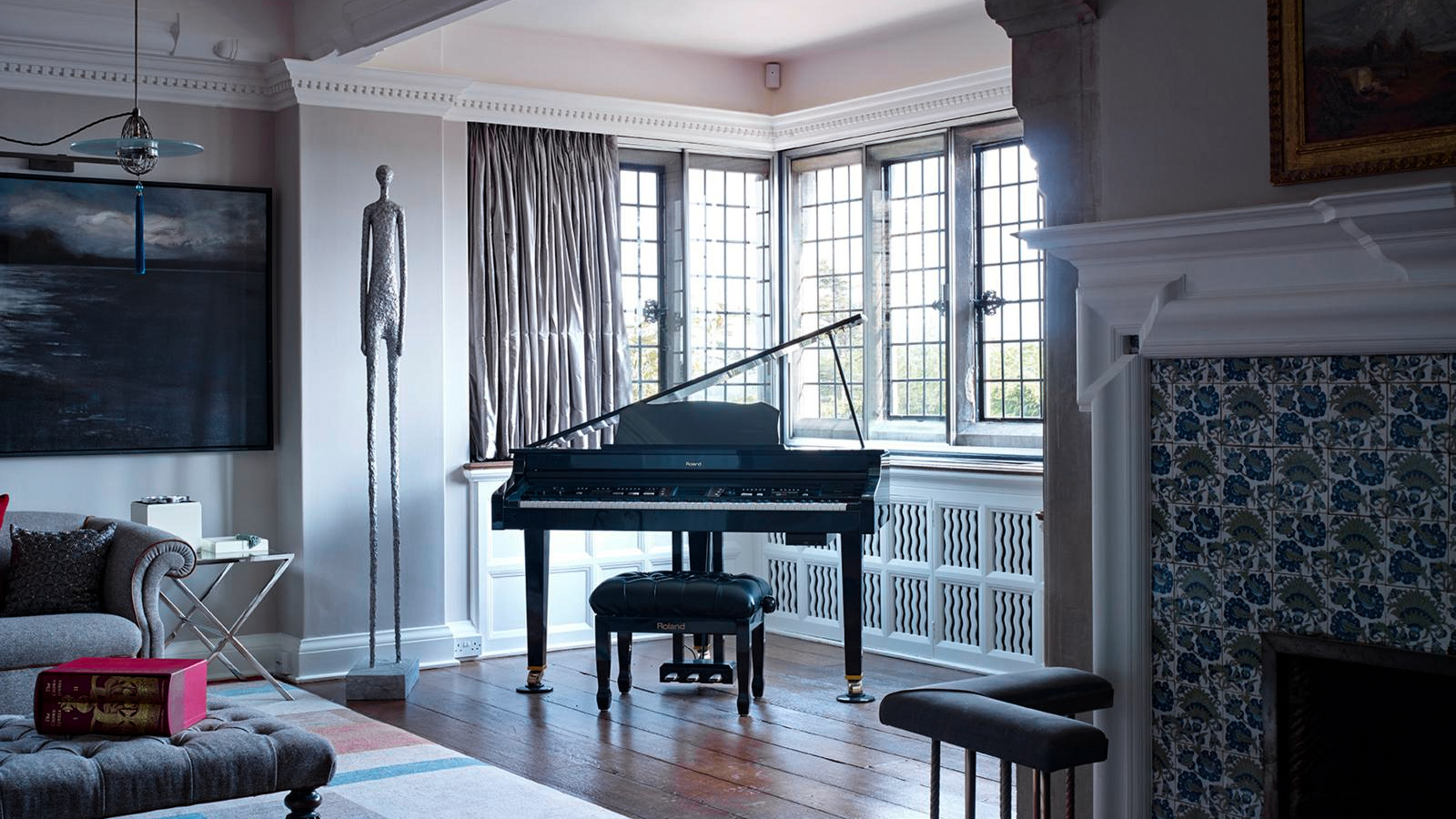
8 tips from a design expert to style a digital piano:
From adding details to choosing the correct lighting, a design expert shares her top tips to ensure your digital piano lives in perfect harmony with your existing décor
Firstly, it's important to think about the dimensions of your area. Digital pianos are available in a range of shapes and sizes, from compact models that can fit easily in any space to upright pianos that resemble traditional instruments. Therefore, it's essential to measure your area before making a purchase.
Secondly, you should consider the key action. This refers to the heaviness or lightness of the keys when you play. There are no specific guidelines in this regard; choose an action that feels comfortable for you. If you prefer a piano with lighter keys, that’s perfectly acceptable. Ultimately, the more at ease you are, the more you will enjoy playing!
Finally, think about additional features. You might want a digital piano equipped with Bluetooth to connect to your mobile device, or perhaps you require dual headphone outputs for lessons. Each brand of piano offers a distinct array of features, so be sure to explore these options before making your decision.
Need more information? I provide answers to common questions about beginner digital pianos in our FAQ section below.
FAQs
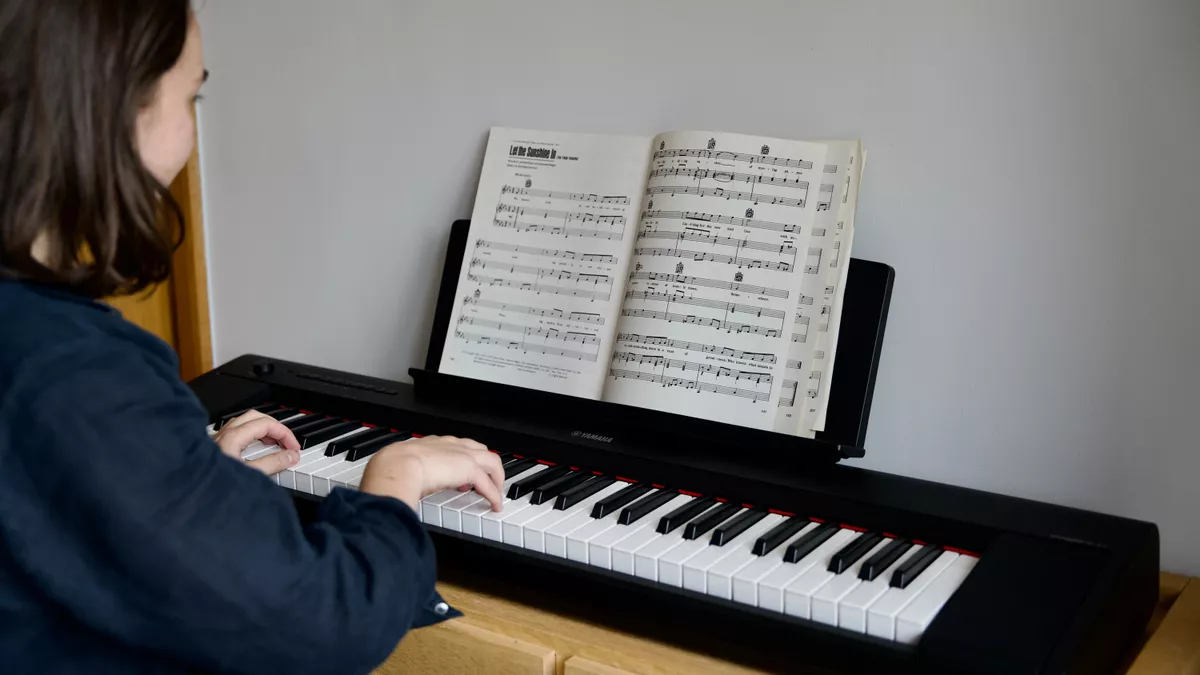
What is a digital piano?
Simply put, a digital piano is a keyboard that replicates the feel and sound of an acoustic piano through digital sampling technology. Unlike a traditional keyboard, a digital piano has full-sized weighted keys and isn't concerned with excessive banks of sounds but instead focuses on a few great piano voices.
Read our guide to digital pianos vs acoustic pianos for more in-depth information.
Is it worth buying a digital piano?
Going digital has many advantages, from not having to tune your new instrument to the ability to move it around more easily, the option of plugging in digital piano headphones for silent practice, as well as the space-saving nature of these pianos.
While beginner digital pianos can come with a varying amount of keys - 61, 76, or 88 - we would highly recommend you opt for an 88-note model. This is especially important if you're planning on learning classical piano, as it's the closest you'll get to an acoustic piano in terms of size, feel, and response.
Most major manufacturers now keep costs manageable by dispensing with large onboard displays, opting instead for the ability to control your piano's sounds and settings via a remote mobile app. This not only means you can get a better-sounding, more feature-laden piano for less cash, but it also opens the digital gateway to use your instrument with the many educational and online lesson services compatible with your device.
The majority of the pianos featured in this guide are of the slimline, compact, and more portable type, rather than the traditional cabinet style, although many can be transformed into a more traditional piece of musical furniture with the addition of an optional stand, which may or may not feature a full set of three pedals as found on an acoustic piano.
All the instruments in this guide were chosen because they provide the full range of essential features you need to look for when buying a great digital piano for a beginner. They all also come complete with a detachable music stand, basic sustain or 'damper' pedal, and power supply.
Need to know more? Check out our feature on the differences between digital pianos and keyboards.
Digital piano keybed, action and weighting
MusicRadar's got your back

The way the keyboard feels and responds as you play is known as the 'action'. Each manufacturer has its own method for replicating the feel of a real piano, resulting in differing levels of weight in the keys. Whether you prefer the feel of a light key-action or a heavy one, it's a matter of personal preference - play whichever you feel the most comfortable on.
Most crucial, in our opinion, is the keyboard itself. All pianos listed here feature 88 full-size, touch-sensitive keys, just like an acoustic piano, and many include a hammer-action. The keys will be weighted so that the feedback feels right, and an authentic amount of pressure from your fingers is required to produce the notes. Ideally, they'll also be graded in weight from left to right so that higher notes require a lighter touch.
Do digital pianos have different sounds?
It's safe to say if you're looking for a great beginner digital piano, a realistic acoustic piano tone is essential - if it doesn't sound and respond like the real thing, it won't be as inspiring to play.
For digital pianos, quality rather than quantity is the focus. On the other hand, keyboards tend to offer a million different voices, from strings to synth leads, drums to pads, and everything in between. Now, while these sounds can be fun, they aren't necessary for learning the piano.
These days the sampling technology is better now than ever, and with increased polyphony, digital pianos can sound almost indistinguishable from the real thing. So as long as the main piano sound works for you, there's no real need for more than a few variations on the primary piano tone, especially if your main reason for buying is learning the piano!
That said, most digital pianos will include a few different tones, such as stings and electric pianos, which can often be layered alongside the piano sound so that they play simultaneously or applied as a split so that you can play a different sound from each hand.
Do beginner digital pianos come with pedals?
Acoustic pianos can feature up to three foot pedals, but only one of them is absolutely essential when starting out, and that's the sustain or 'damper' pedal. For this reason, all of the pianos on our list offer a sustain pedal input, with a basic pedal or footswitch included in the purchase price. Some pianos even offer the opportunity to add an optional three-pedal board with metal footplates, as you'd find on an acoustic piano at a later point should you need one.
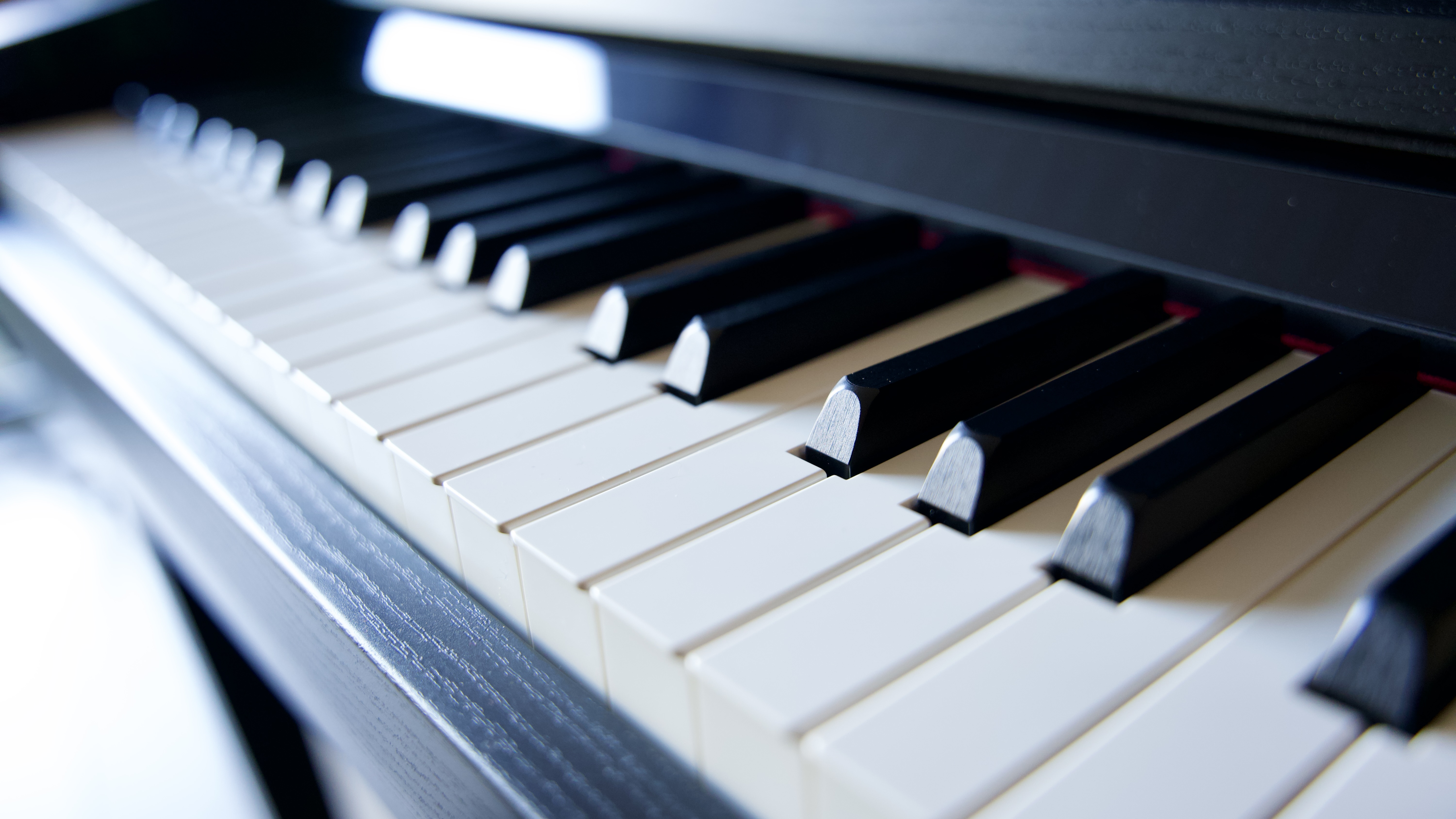
Do beginner pianos have a built-in metronome?
It may sound boring, but a metronome is a useful tool to help keep things in time, particularly when practicing scales and arpeggios. Luckily every beginner piano has one built right in. A couple of our choices also feature built-in drum patterns to play along to, and many offer basic performance recording and playback features to monitor your progress.
Can I use headphones with a beginner digital piano?
Yes! One of the biggest advantages of going digital is the ability to practice with a set of headphones. As well as built-in speakers, a headphone output is absolutely crucial so that you can practise confidently to your heart's content while the rest of the family does their own thing. All of our contenders sport at least one headphone socket, and a couple provide a second, extra socket for your teacher or proud parent to listen in!
Other beginner digital piano features
Other common features you'll find on a quality beginner digital piano include extra keyboard modes such as duo, dual, or split. Duo mode creates a four-octave keyboard at each end of the piano so that students and teachers can play together on the same instrument.
Aside from advances in sound generation, technology has enhanced the digital piano experience even further recently, with some models featuring Bluetooth MIDI/Audio capability.
Together with companion smartphone apps, these functions allow you to edit sounds remotely, stream music to play along with from your mobile device through the piano's speakers, or record MIDI data of your performance for evaluation and editing. We've created this handy guide showing you how to connect your digital piano to a computer.
Meet the experts
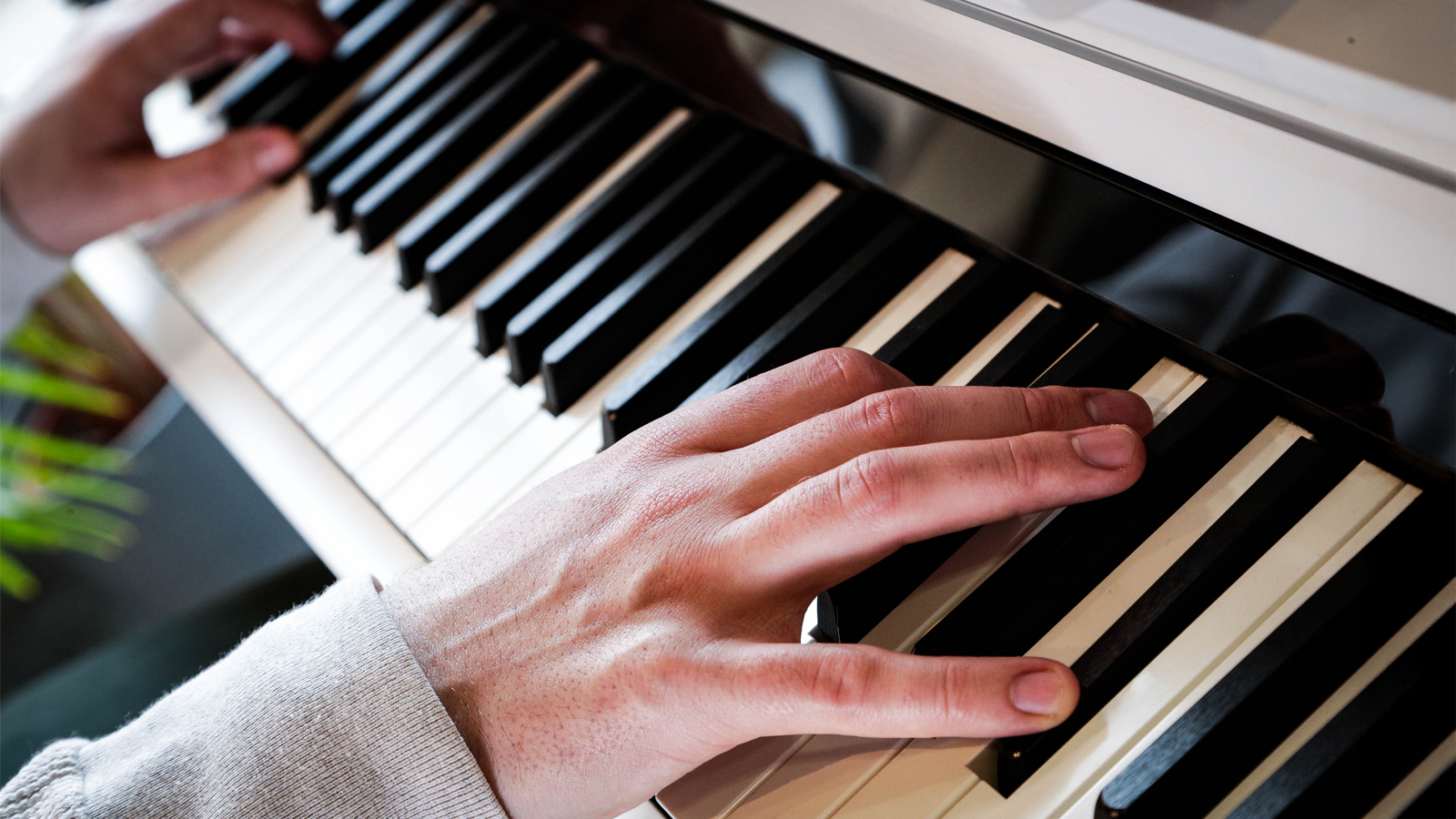
☑️ Established 2007
☑️ 2.9 million monthly users globally
☑️ 9,500+ reviews on-site
With more than 17 years of experience, MusicRadar is the premier music-making website in the world. Run by musicians for musicians, we offer expertly written gear round-ups and high-quality, authoritative reviews by an extensive team of highly experienced industry professionals.
Below you'll find more information on the expert authors of this guide.

Daryl is a Senior Deals Writer at MusicRadar, and is responsible for writing and maintaining buyer's guides on the site as well as testing out products for reviews. Before writing for MusicRadar, Daryl worked for many years in music retail, helping musicians of all ages find the best gear for them. Whether it was a beginner's first keyboard or a top-of-the-range digital piano for the pros, Daryl was there to help steer players in the right direction.

Dave is an expert in all things keys, from beginner keyboards, to digital pianos, synths and beyond, and has been a music technology writer and product tester since 2007, contributing to the likes of Computer Music, iCreate, MusicRadar and Attack Magazine. Dave has also programmed and played keys on recordings by a range of world-renowned artists including George Michael, Kylie and Gary Barlow.

Quentin is a composer specialising in writing for contemporary dance, theatre and film. He is also a classically trained pianist and multi-instrumentalist. One half of trip-hop duo Moon Thrills, Quentin also teaches songwriting to the undergraduate students at LCCM in London. He has a newly discovered passion for sound synthesis and finds it a great way to explore new and exciting ways to develop his music.
How we test beginner digital pianos

It's essential that we put the instruments through several tests to ensure they are worthy of being included in this guide to the best digital pianos. There are so many digital pianos on the market, and only the instruments we rate highly will make it on the list.
When we receive a digital piano for review, we start by asking ourselves the following questions:
- How easy is the piano to play?
- Are the sounds inspiring and varied?
- Is the unit easy to navigate without reaching for the manual?
- Is the digital piano well-made and robust?
- And does the piano offer the user good value for money?
Below you'll find a more detail of our testing criteria.
Playability: The first test - and most important for us - is how the piano feels to play. This is, of course, a combination of the key action as well as the feel of the physical key. To test the key action, we'll first play the piano at various dynamics - and musical styles - to see how the instrument responds. A good digital piano should feel as close to an acoustic piano as possible and most definitely not like a keyboard.
This goes hand in hand with the texture of the keys themselves. The best digital pianos go out of their way to recreate the feel of real ivory and ebony, resulting in a more authentic playing experience.
Sound quality: Next up is the sound. We will carefully go through the list of inbuilt voices while paying close attention to the frequency range of the speakers. A real piano produces a massive range of tones, from extreme lows to fierce highs, and while a digital can't recreate this perfectly, we should be getting close with today's technology. It's also important to try the piano via headphones, as this is how many players will practice.
Features: Next, we will go through any extras included with the piano. The pedals, audio outputs, MIDI compatibility and any accompanying app are all tested to see how they compare to the rest on the market at the respective price points.
Build quality: Of course, we need to examine the piano's overall build quality. It's crucial for the instrument to exude a sense of robustness and solid construction. We also look for pianos to be easy to build and put together.
Value: When evaluating a piano, the last part of the equation is value for money. It's not just about the features and performance but also about whether it's worth the price. We'll carefully combine our thoughts on all the above sections - from design and functionality to performance and sound - and weigh them against the digital piano's price to determine if we think it's worth the investment.
Read more about how we test digital pianos at MusicRadar.
About our videos

Filming locations
It’s a fact that most digital pianos are quite heavy, making them difficult instruemts to transport. Therefore, we employ two methods for recording our demo videos. When filming several models from the same brand, it’s more efficient to do so at a music shop or the brand’s showroom. This method enables us to record multiple pianos in one go without the hassle of shipping large instruments nationwide. However, if on-location shooting isn’t feasible, we film at our dedicated photo studio located in Bath, UK.
Capturing the audio
To keep things straightforward, we perform the same three pieces on every piano. We have specifically crafted the music for our demonstrations, creating three unique pieces designed to highlight the characteristics of each piano's sound. The audio is recorded either through the dedicated line output or the headphone jack. This approach maintains a clean audio signal, ensuring it mirrors the sound as it would through your own headphones, without being affected by the acoustics of the filming environment.
Post-processing
As you might anticipate, we do conduct a minimal amount of post-processing on the audio once recorded. We add a slight amount of compression to help mantain uniform volume levels throughout the demos, but we do not apply any EQ or post effects like reverb. The audio remains true to its captured state, with just enough compression to ensure consistency across various pianos.
Latest updates
23/04/2025: We have completely overhauled this page, adding demo videos for each of the Yamaha pianos, new photos, and more in-depth information and clarity to our buying advice section.
31/10/24: We have removed the Yamaha P-125a, as it is now discontinued. We have also included "expert verdict blocks" at the end of each product entry so you can better understand our choices.
05/08/24: To ensure this guide is as up-to-date as possible, we conducted a full audit of the product list. We've also added more depth to our buying advice and testing methodology.
18/12/23: We have recently improved the navigation of this page, so hopefully it is now easier than ever to find the perfect beginner digital piano. You can now use the "quick list" section to get to know our top choices without any fuss. We've also included links to read a more detailed review of each model if you'd like to learn more.
Related buyer's guides
- Don't forget about these essential piano accessories
- Hear yourself loud and clear with the best keyboard amps
- Sit comfortably with one of the best piano benches
- Enhance your rig with the best keyboard stands
- Best studio headphones for music performance and production
- Digital piano FAQ: we answer common digital piano queries
Want all the hottest music and gear news, reviews, deals, features and more, direct to your inbox? Sign up here.

I'm a Senior Deals Writer at MusicRadar, and I'm responsible for writing and maintaining buyer's guides on the site. As part of my role, I also scour the internet for the best deals I can find on gear and get hands-on with the products for reviews. My gear reviews have been published in prominent publications, including Total Guitar, Guitarist, and Future Music, as well as Guitar World.com. I've also had the privilege of interviewing everyone from Slash to Yungblud, as well as members of Sum 41, Foo Fighters, The Offspring, and many more.
In a previous life, I worked in music retail, selling everything from digital pianos to electric guitars. I'm also a fully qualified sound engineer who holds a first-class Bachelor's degree in Creative Sound Production from the University of Abertay.